The Best Fujifilm X-Series Kits for Travel Photography
A Post By: Matt Murray

Travel has always been my first love. In 1994 I bought my first camera – a Pentax Zoom 90 WR point and shoot – because I was going to Europe for a two-year working holiday. The only way to share photos with family back then was to have the film developed and post the prints home!
While photography (and technology) has changed remarkably in the last 25 years, what you should look for in a camera for travel photography is much the same: small, light, capable of great results and preferably weather resistant.

I’ve used all sorts of camera brands over the years. However, for me, Fujifilm X-Series cameras and lenses are the perfect travel companions. Whether it’s a trip to the Australian outback, visiting remote Buddhist temples in the Javanese jungle, photographing puffins in the Faroe Islands or capturing traffic trails in Taiwan, my X-Series cameras have always produced stunning results. Here are my recommended Fujifilm X-Series kits for your next big adventure.
- Best minimalist kit
Camera: Fujifilm X100F Lens: Fixed F2 Fujinon lens Weight: 469 grams

The best minimalist kit choice was easily the stunning Fujifilm X100F . This is the best compact digital camera ever made. Yes, it really is that good!
Many photographers – including diehard users of other brands – use this as their “take everywhere” shooter. The X100F is small and quiet, and the fast f/2 Fujinon lens creates beautiful images. It may be small, but it boasts an impressive array of features including a leaf shutter and built-in neutral density filter.
Like all the cameras I feature in this article, the X100F can shoot RAW alongside Fujifilm’s array of stunning JPG film simulations, that replicate the look of classic films such as Provia and Velvia. Fujifilm cameras produce the best JPGs I’ve seen straight out of the camera.

This choice is a little unusual as it has a fixed lens. That’s right. You can’t take it off and swap it for another lens. If the 23mm focal length (35mm in full-frame terms) isn’t your preferred choice, the system also has wide-angle conversion and telephoto converter lenses. However, these do add extra weight to your kit. One of the few downsides to the X100F is that it’s not weather resistant. But, at least it’s small enough to fit in your pocket during a downpour.
- One body plus one lens kit
Camera body: X-T30 Lens: XF 18-55mm F2.8-4 R LM OIS lens Approximate weight: 693 grams
If you only have space to take one body and one lens on a trip, I would recommend the brand new Fujifilm X-T30 with the XF 18-55mm F/2.8-4 R LM OIS lens . I’ve been using this line of cameras since buying the X-T10 as a second body back up to my X-T1, and I’ve also used the X-T20. The X-T cameras with a “0” after them are lighter, cheaper, non-weather resistant versions of the flagship models, but usually feature much of the same technology. For example, the X-T30 has the same 26.1MP X-Trans 4 CMOS sensor as the X-T3.
Alternatives for the camera body would be the X-T20 and the X-E3 . The X-T20 gives you a screen that tilts up and down for overhead and low to the ground shots. Whereas, the X-E3 is the more minimalist choice, and features a joystick that controls where the focus point is in the frame. The X-T30 and the X-T3 have both of these features.
My choice of lens for this kit is the XF 18-55mm F/2.8-4 R LM OIS. Not only is it one of my favorite Fujifilm lenses, but it’s also the lens that I’ve used the most over the last three years.
Often sold with camera bodies, many newcomers to the X-Series remark that the XF 18-55mm F2.8-4 R LM OIS lens is “surprisingly good for a kit lens.” In no way is this lens like the subpar beginner kit lenses produced by other manufacturers. The XF 18-55mm F/2.8-4 R LM OIS is a stunningly sharp lens in its own right and has produced some of my favorite images ever.
It may not be weather resistant, but it does feature OIS (optical image stabilization) to ensure your shots are as sharp as possible at lower shutter speeds. It’s a variable aperture zoom lens, meaning that the maximum aperture changes as you zoom through the range. However, you can still shoot at f/2.8 at the 18mm focal length, and f/4 at the 55mm end. It’s a top lens for landscape, cityscape, and portraits.

- Best kit under 1kg
Camera body: X-T30 Lenses: XF 18-55mm F/2.8-4 R LM OIS + XF 35mm f/1.4 R Approximate weight: 880 grams
My picks for the best kit weighing under 1kg include the same choices as the ‘One body plus one lens’ kit above, with the addition of the XF 35mm f/1.4 R . The first time I used this lens, I was blown away by its sharpness and stunning bokeh. It’s a top lens for portraits, still life subjects and even street shooting.

It did have a reputation of being slow to focus, but with Fujifilm’s ongoing firmware updates to both lenses and camera bodies, this has greatly improved. I wouldn’t hesitate to use it in any situation. This lens has a fast maximum aperture of f/1.4 that enables you to shoot images handheld at night without raising the ISO too high or lowering the shutter speed too low.

- One zoom, two fast primes kit
Camera bodies: X-T30 Lenses: XF 18-55mm F2.8-4 R LM OIS + XF 35 1.4 R + XF 60mm f2.4 R Macro Approximate weight: 1.095kg
For a lightweight travel kit weighing just over 1kg and featuring two fast prime lenses, add the XF 60mm f/2.4 R Macro to the kit above. This is another option often overlooked by newer lenses on the block, but it offers superb image quality for portraits and macro shots.
Although it’s not a true macro lens (it offers 1:2 magnification rather than the standard 1:1 magnification for a true macro lens), it is an incredibly light option for close up shots. It weighs less than a third of the weight of Fujifilm’s XF 80mm F/2.8 R LM OIS WR Macro lens.

- Best weather resistant kit
Camera bodies: X-T3 Lenses: XF 16mm F1.4 R WR, 23f2, XF 50-140mmF2.8 R LM OIS WR. Approximate weight: 2.6 kg check

The best weather resistant kit features Fujifilm’s newest X-Series flagship camera. The X-T3 has won high praise from users and critics alike since its release in mid-2018. It is an impressive performer, having the fastest autofocus in the X-Series lineup and a continuous shooting rate of up to 20 frames per second. I’ve really enjoyed using this camera alongside my X-T2, which is still an excellent camera.
The newcomer to this kit is the XF 16 f/1.4 WR lens – often praised as the best lens in the X-Series lineup. Weather resistant, the lens is optically stunning, and a solid performer for landscape, cityscape, and low light shots. With a close focusing distance of 15cm, the XF 16 f1.4 WR lens is highly versatile. I’ve loved using it for food photography.

- Best travel kit with zoom lenses
Camera bodies: X-T3 and X-T30 Lenses: XF 18-55mm F/2.8-4 R LM OIS and XF 50-140mm F/2.8 R LM OIS WR. Weight: 1.8kg

This kit gives you the best of both worlds: the light X-T30 with the XF 18-55mm F/2.8-4 R LM OIS lens, and a weather resistant combo of the X-T3 with the stunning XF 50-140mm F/2.8 R LM OIS WR lens.
Weighing in at 995 grams, you might actually question why I would choose this lens as part of a travel kit? I’ve even been laughed at when I’ve suggested this lens for travel. Although it’s heavy, this lens is a must-have in my travel photography kit.
Like an equivalent focal range 70-200mm, the lens has a constant maximum aperture of f/2.8, meaning that you can shoot with a shallow depth of field throughout the zoom range. This is particularly helpful during low light situations, or to achieve shallow depth of field at any time.
This XF 50-140mm F/2.8 R LM OIS WR lens also features OIS (optical image stabilization) and has a pleasing bokeh. I’ve used this lens for landscape, cityscape, and portraits. If I could only pick one lens for travel, I’d have to flip a coin to choose between the two amazing zooms in this kit.

If you have different weight or budget considerations, you could substitute the excellent XF 55-200mm F/3.5-4.8 R LM OIS lens in this kit. I’ve never regretted taking this lens along with me on trips, but if you plan on shooting in low light at the far range of the zoom, you will be shooting at a maximum aperture of f/4.8, which may slow down shutter speeds. Thankfully, this is another lens with OIS (optical image stabilization).

- My favorite kit
Camera bodies: X-T3 and X-T2 Lenses: XF 16mm F/1.4 R WR + XF 18-55mm F/2.8-4 R LM OIS + XF 35mm f/1.4 R + XF 50-140mm F/2.8 R LM OIS WR Approximate weight: 2.9 kg

This is my favorite kit. It may be the heaviest listed in this list, but this is what I would typically take on my travel adventures. It pairs two weather resistant camera bodies with my two favorite zooms and two favorite primes. This kit has a reach from 16-140mm (24-210 in full-frame terms) and covers many shooting situations. The XF 50-140mm F/2.8 R LM OIS WR lens may not be the longest in the X-Series lineup, but it’s still capable of capturing stunning wildlife images.

- X-Series options I don’t recommend for travel kits
In 2018, Fujifilm released the entry-level X-T100 . Although this attractive looking camera looks very much like the rest of the X-Series line-up, its autofocus can’t match the cameras I’ve featured above.
- 18-135mm lens
The XF18-135mm lens is often on the list of recommended lenses for Fujifilm travel photography. Having owned and used one, it doesn’t make my list. For a slower, all-in-one travel zoom, I don’t think it has enough reach.
The 27mm F/2.8 pancake lens is sharp, and you can often buy them at a bargain price. It’s a firm favorite amongst many Fujifilm photographers, but it doesn’t make my list as it’s the only lens in the lineup not to have a ring on the lens to change aperture.

The Fujifilm X-Series range is perfect for travel photographers for so many reasons.
With an impressive lineup of prime and zoom lenses for all budgets, the X-Series has you covered for a wide range of situations including low light photography and adverse weather conditions. The camera bodies feature retro charm and excellent ergonomics, and no other system can match the beauty of Fujifilm’s straight out of camera JPGs.
Whether it’s a day trip near home or the trip of a lifetime, Fujifilm X-Series is my number one recommendation for travel photography.
Do you use Fujifilm Cameras for your travel photography? Let us know what you use in the comments below.

Table of contents
Travel photography.
- 8 Ideas of What To Do With Your Vacation Photos
- What Skills do You Need to be a Travel Photographer?
- How to Capture the Essence of a Place – Travel Photography Tips
- 7 Tips to Make Travel Photography Interesting Again
- Avoid These 5 Major Mistakes Made By Travel Photographers
- Travel Photography – Do You Ask Permission Before, After Or Not At All?
- Travel Photographers Workflow – At Home and on the Road
- The Photo Critique: Travel Photo Edition
- 6 Reasons Why Your Travel Photos Don’t Look Like the Ones in Magazines
- The Fine Line Between Travel Photography and Having a family Vacation
- 10 Ways to Improve your Vacation Photos
- What is Your Biggest Travel Photography Challenge?
- 7 Travel Photography Hacks to Get You Going Places
- How to Use a Travel Photography Shot List to Come Home with Better Photos
- Why You Need To Be A Guerrilla Travel Photographer – And How To Become One
- How to Get the Most Out of a Travel Photography Location
- Travel Photography, Backpacking and Packing Light
- 6 of the Best Smartphone Apps for Travel and Landscape Photography
- How To Keep Camera Gear Safe While Traveling
- 5 Ways to Find Great Locations for Travel Photography
- 15 Tips for Protecting Your Images While Traveling
- Safety Tips for Travel Photographers (Particularly Women)
- Off Camera Flash for Your Travel Photography
- How to Use Natural Light in Travel Photography
- Photo Composition Tips from Bob Holmes – Composition in Travel Photos
- The Importance of People in your Travel Photos
- Create More Unique Travel Photos by Adding a Model
- 5 Lessons Learned Switching from DSLR to Mirrorless for Travel Photography
- How To Keep Your Batteries Charged While Traveling – Remote Location Edition
- 5 Tips For Travel With Only One Lens
- 5 Lessons Learned While Using a Kit Lens for Travel Photography
- 7 Tips for Using a Tripod in Landscape and Travel Photography
- The First 10 Things You Need to Buy After Your Camera for Travel Photography
- Tiniest Interchangable Lens Micro Four Thirds Cameras for Travel with Amazing Quality
- The Only Three Lenses You Need for Travel Photography
- Must Have Gear for Travel Photography Newbies
- Why Olympus Mirrorless Cameras are Top Notch for Travel Photography
- The Best Travel Photography Lenses: Our Top 12 Picks
- 5 Camera Bags That Every Travel Photographer Needs At Some Point
- A Travel Tripod that can Also Act as a Light Stand
- The iPad as a Photographer’s Travel Helper [a Review]
- 7 Non-Photography Items Which No Travel Photographer Should Leave Home Without
- 7 Reasons Why a Tripod is a Travel Photographer’s Best Friend
- Travel Photography Equipment – What To Pack?
- 10 Ways to Improve Your Travel Photography Portraits
- How to Plan and Take Killer Sunset Photos on Your Next Vacation
- Tips for Photographing Local Parks
- How to Find the Best Kinds of People to Photograph While Traveling
- 4 Ways To Make Better Street Portraits While Traveling
- How to Photograph People When Traveling
- How To Take More Creative Environmental Travel Portraits
- Photographing Signs – Travel Photography Tip
- Tips for Creating Better Documentary Travel Photos
- 6 Tips for How to be a Culturally Sensitive Travel Photographer
- Travel Photography Subjects: Old People
- How to Put the Fine Art into Travel Photography
- Travel Photography without the Travel – Going Local
- How to Tell Better Visual Stories with Travel Photography
- Create a Theme to Step Up Your Travel Photography
- Travel Photography ~ Think Outside The Postcard When Photographing Famous Landmarks
- Photographing Festivals and Events – Tips for Travel Photographers
- Video: Travel Photography Tips – Shoot with a Purpose
- 7 Reasons Why You Should Art Direct Your Travel Photography
- Buy Less Gear: Travel and Experience More
- Editorial Travel Photography – Telling the Story of a Location
- Travel Photography Subjects: Religion
- Travel Photography Subjects: Views
- Travel Photography Tips – Photographing the Coast
- Taking Photos in Busy Tourist Destinations with no People in the Shot
- How to Backup and Manage Your Photos When Traveling Without a Computer
- Tips for Creating a Killer Vacation Photo Book
- Photo Editing Workflow for Travel Photography
- How to Build a Travel Photography Portfolio
- How to Become a Professional Travel Photographer – Two Paths
- 11 Tips for Shooting Travel Stock Photography to Make Money
- How to Sell a Travel Story to a Magazine and Help Fund Your Travels
- 7 Realities That Hit Once You Become a Professional Travel Photographer
- Is a Career in Travel Photography Right for You?
- Travel Inspiration: Bali
- Canadian Travelogue – Introduction
- Travel Photography Inspiration Project: South Africa
- Travel Photography Inspiration Project: Thailand
- Canadian Travelogue – Newfoundland – Gros Morne National Park
- Travel Photography Inspiration Project: India
- Travel Photography Inspiration Project: Japan
- Travel Photography Inspiration Project: Kenya
- Travel Photography Inspiration Project: Morocco
- Travel Photography Inspiration Project: Vietnam
- An Interview With World Traveler Gary Arndt
- Interview: Oded Wagenstein – Author of Snapn Travel Guide and dPS Writer

Read more from our Cameras & Equipment category
Matt Murray is a travel, portrait and stock photographer from Brisbane, Australia. Matt publishes Fujifilm X-series body reviews, lens reviews and photo galleries on his website Matt Loves Fuji . Matt also hosts an analogue photography podcast Matt Loves Cameras featuring reviews of classic film and instant cameras.

- Guaranteed for 2 full months
- Pay by PayPal or Credit Card
- Instant Digital Download

- All our best articles for the week
- Fun photographic challenges
- Special offers and discounts

The leading authority in photography and camera gear.
Become a better photographer.
12.9 Million
Annual Readers
Newsletter Subscribers
Featured Photographers
Photography Guides & Gear Reviews

Best Fuji Lens For Travel
What's the best Fuji lens for travel? This guide takes you through 5 top picks of the best zooms to primes to pair with your Fujifilm X-Series camera.
Camera Gear Guides | Fujifilm Lens Guides | Lens Guides | By Greg Cromie
If you use Fujifilm X-series cameras and are often on the move, this guide to the best Fuji lens for travel photography is definitely worth a read.
Whether you’re keen to shoot panoramic vistas with wide angle lenses, or prefer to get close up action shots with a zoom lens, one thing’s for certain – you’re going to want lenses with stellar image quality!
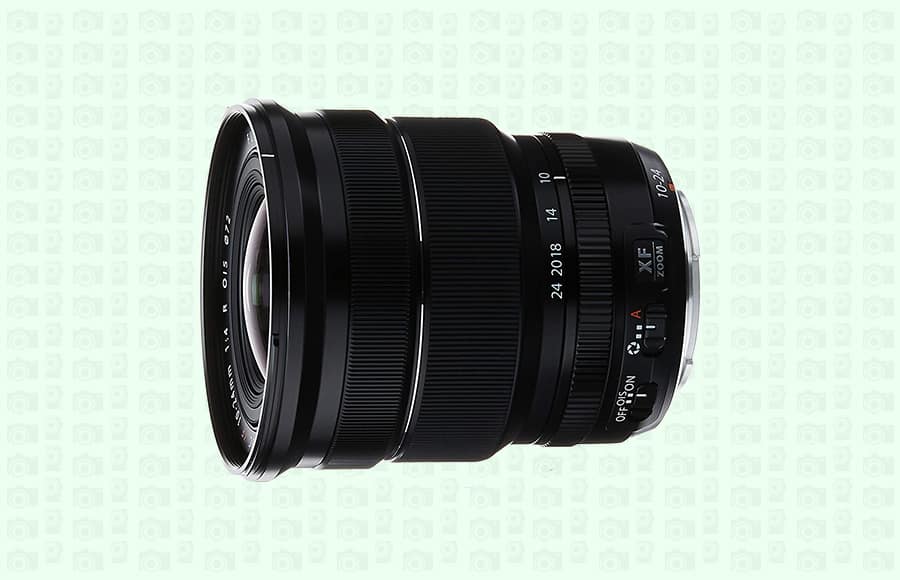
Capture stunning vistas on your travels with this super light and durable wide-angle lens.
With so many amazing Fuji lenses on offer (see them here ), it’s hard to know which ones to pick to satisfy your photography wanderlust.
To save you some time, we’ve hand-picked the best 5 options in 2024.
Let’s take a closer look.
Table of Contents
Best Fuji Lens for Travel in 2024
1. fujifilm xf 10-24mm f/4 r ois.

See More Reviews
- Lightweight
- Optical Image Stabilisation (OIS) switch
- Beautiful bokeh
- Edge-to-edge sharpness
- Balance is a little front heavy
- Not weather-sealed
It’s evident that Fujifilm develops some of the best high-quality lenses to suit all photography genres. So when it comes to choosing Fujifilm lenses for travel photography, you’re somewhat spoiled for choice.
If you’re planning on travelling to a destination with gorgeous wide vistas and landscapes, then one of your first choices for a lens is the Fujifilm XF 10-24mm f/4 ( reviewed here ). This is the best Fuji travel lens that excels in capturing gorgeous landscapes.
This is one of the first and certainly one of the widest lenses in the Fuji lineup and has a 35mm equivalent focal length of 15-36mm. Out wide at 10mm, you have the capacity to capture sweeping landscapes or wide city views.
At the closer end of 24mm, you have a relatively natural field of view for closer situations such as architecture and street work. This makes it perfect for travel photography, especially if you’re visiting amazing cities with unique details.
Regardless of the intended use, this lens will give you a great amount of flexibility.
The Fuji XF 10-24mm is one of the older of the zoom lenses on offer, however, it’s built to last a lifetime. It features a full metal body including the lens mount making it a rugged lens but not one that’s weather resistant.
For a lens of this size, it’s not too heavy, however, the weight seems to be in the front of the lens rather than balanced. The total weight of the lens is 410gm and when paired with any of the Fujifilm cameras such as the X-T3, you have a total kit weight of just under 1kg.
When supporting this lens two-handed on a Fujifilm X Series body, the weight is evenly spread.
The lens has a total diameter of 78mm and a length of 87mm. This remains fixed as the zoom function happens within the lens barrel. The filter thread has a diameter of 72mm.
Overall it’s a neat lens that won’t dominate your travel bag or day pack when you’re out and about on your travels.
The lens sits well in your hand and the aperture, manual focus and zoom rings are all easily accessible with your fingers naturally sitting in place. Each of these rings has the necessary glides with just the right resistance to prevent slippage or knocks.
The Fuji XF 10-24mm f/4 features an Optical Image Stabilisation (OIS) switch, which is great for low light shooting and handheld shooting with slower apertures.
This lens would be perfectly paired with a camera such as the Fujifilm X-T3 which does not have In Body Image Stabilisation (IBIS).
The lens performs incredibly well in the autofocus department, and due to its maximum aperture of f/4, it has great edge to edge image sharpness. Given that this lens is primarily suited for shooting wide angle and ultra-wide landscapes and scenery, you’re likely to drop your aperture down to f/8.
In lower light settings, having a maximum aperture of f/4 is not ideal – however, thanks to the OIS, you can slow down your shutter speed considerably even if shooting handheld.
Unfortunately, the Fuji XF 10-24mm f/4 does not have weather resistant sealing. This is disappointing given the zoom system is all maintained in the barrel of the lens. However, it does have a minimal focus distance of around 10″ (25.4cm) making for some fantastic and dynamic close up images.
This Fuji lens is fantastic value at just under US$1,000. The newer Fuji XF 8-16mm f/2.8 currently retails for twice that price. In this area, the XF 10-24mm f/4 is a stand out performer at an amazing price.
As mentioned, if you’re looking at travelling to some truly beautiful scenic locations and landscape photography is your jam, then the Fuji XF 10-24mm f/4 is a must-have for your travel kit.
It may not be the only lens you choose to pack, but it will be the one you’re the most thankful for when you get home and see your images.
2. Fujinon XF 18-55mm f/2.8-4 R LM OIS
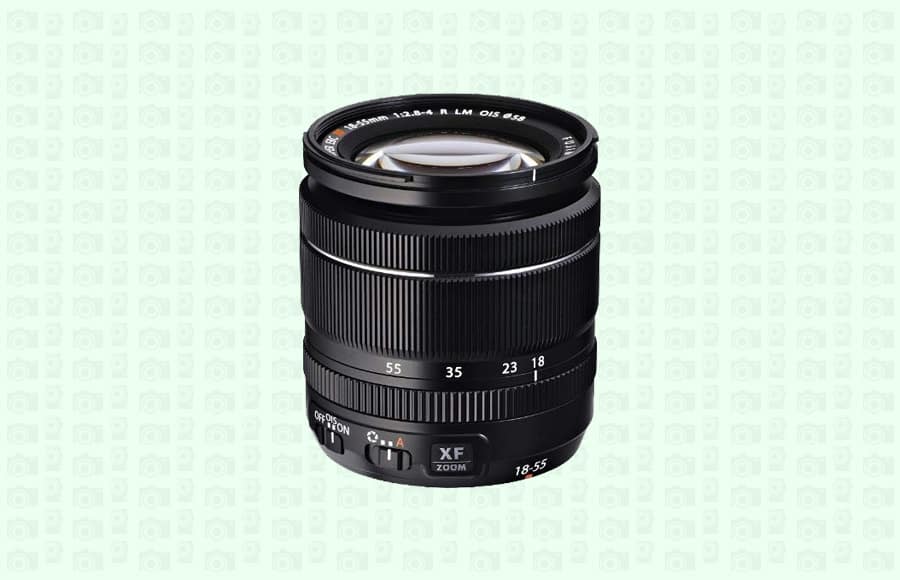
- Compact & neat design
- Flexible zoom range
- Minimal distortion
- Not great for macro
If you’re planning a photographic holiday and you want to pack a lens that you could pretty much rely on exclusively, then the Fujifilm XF 18-55mm f/2.8-4 is the one!
I’m not suggesting that this should be the only lens you take – however, if you’re travelling on a budget, or you want to travel compact and light, then this kit lens is a must-pack .
The XF 18-55mm is an incredibly compact lens that has a neatly aligned barrel made of durable materials. When zoomed in, the barrel extends but not unreasonably far. Each outer element of the barrel has the same diameter and, as a result, the whole lens design is clean and neat.
The manual focus and zoom rings are comfortable with a suitable amount of grip. The zoom ring has the desired amount of glide with enough resistance to prevent the lens from extending out due to gravity or movement.
This lens is a common choice for the Fujifilm kit lenses with their premium camera bodies which you can usually find at Amazon or in the Moment Store . The lens weighs only 310gm and when paired with a camera such as the Fujifilm X-E3, the total kit weight is only 647gm.
A combination such as this makes it an incredibly appealing travel kit especially if space and weight is a premium.
Further to this, the lens has a diameter of 65mm and a filter thread size of 58mm, making it a very comfortable lens to hold and control. This lens is 70.4mm in length when at the wide zoom and 97.9mm in length at the telephoto end.
In practical terms, it would be fair to ask what makes this one of the best Fuji lenses for travel. The answer is the versatility you get for the size of the lens.
Having an 18-55mm zoom range provides you with a lot of flexibility without having to pack bigger and heavier lenses.
At the wide angle end, 18mm gives you a great focal length for anything from landscapes and beach scenes to architecture and street work.
At the 55mm telephoto end, you have far more reach to gain greater details at temples, nature reserves and travel portraits. All of this in a lens that you can comfortably carry all day on the camera of your choice.
Given its compact size and low weight, the Fuji XF 18-55mm f/2.8-4 works perfectly with any of the X Series camera bodies produced by Fuji. Regardless if you’re shooting with the Fujifilm X-H1 or the far smaller Fujifilm X-T200 , this lens will be well balanced.
Of course, if you’re wanting to go for a more compact body, then I would recommend considering either the Fujifilm X-E3 or the Fujifilm X-T30 . Both of these are brilliant mirrorless cameras that are lightweight, feature-packed and perfect for travel.
Neither this lens nor either of these suggested Fujifilm cameras is weather-resistant; so caution should always be exercised when out in the elements.
The Fuji 18-55mm has a maximum aperture of f/2.8 at the wide end and f/4 at the telephoto end. While not the widest of apertures, you have ample opportunity to create great subject separation between your foreground and background subjects.
Further to this, low light performance can easily be managed with apertures at those levels.
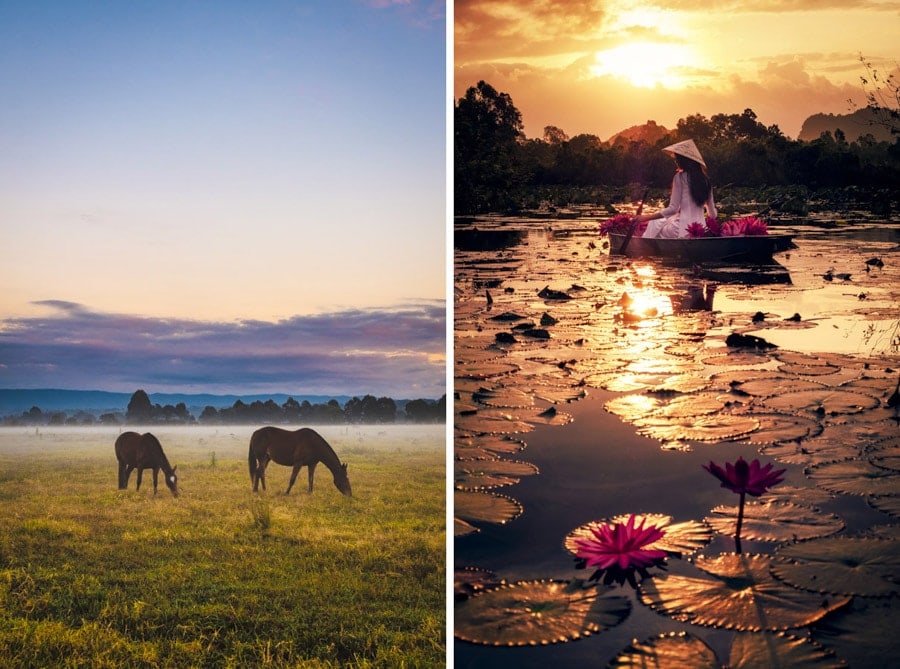
Fujifilm XF 18-55mm | © Bhagi Siva
Thanks to the included Optical Image Stabilisation switch on the barrel of the lens, you have greater low light control working at slower shutter speeds. Even with a Fujifilm X-E3, you can now have stabilisation available for stills and video.
As mentioned previously, the Fuji XF 18-55 is usually included with the mid-high end Fujifilm camera bodies. However, this little lens is one of the most highly acclaimed kit lenses on the market. At just under US$700, you’re getting an incredible lens that could be put to any task successfully.
In a travel setting, this Fuji lens will prove to be an excellent choice for all of your shooting needs. Regardless of your destination, you’ll be able to capture high-quality photos of interesting scenes both near and far – all with a single compact and highly functional camera with one great lens.
As another bonus, you can carry this kind of kit all day and in any setting without it becoming heavy or cumbersome.
The reasons above make it clear why this is not only one of the best Fuji lenses for travel photography, but one of the best Fuji lenses full stop. Happy travels!
3. Fujifilm XF 55-200mm f/3.5-4.8 R LM OIS
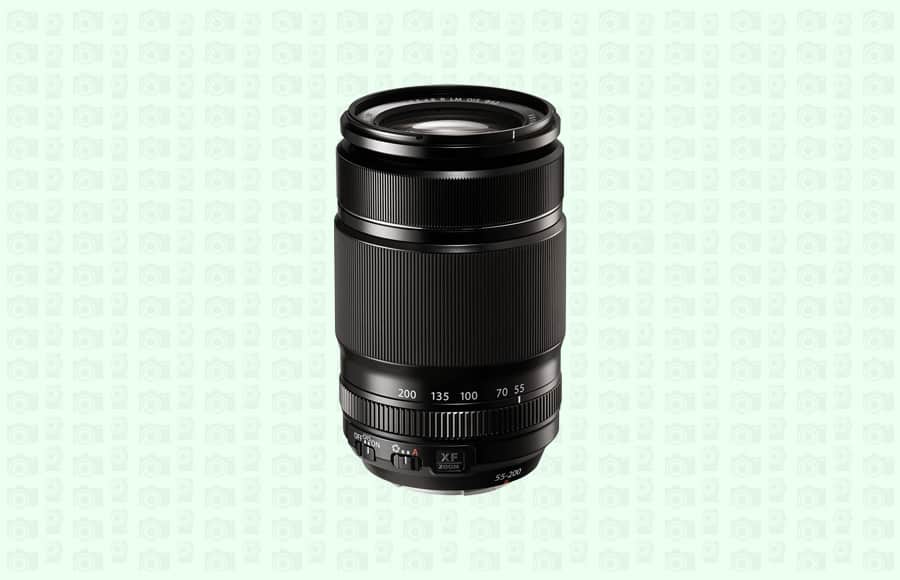
- Strong build
- Light for its size
- Quick and accurate autofocus
- Excellent image quality
- Some zoom creep
- Hunts for focus in low light
The Fujifilm XF 55-200mm f/3.5-4.8 is another incredible lens that clearly earns its seat at the table of best Fuji lenses for travel. It has very much been designed to be paired with the Fuji XF 18-55mm f/2.8-4 lens.
With this pair of lenses, you have a very comprehensive travel kit. The smaller 18-55mm lens will cover your wide angle work and this 55-200mm will cover the things you cannot reach. This will be a perfectly suitable kit to carry with you all day.
The Fuji 55-200mm has an incredibly strong build with metal and durable plastic body. The aperture, zoom and manual focus ring are well made and hug the body comfortably with no slack. Much like the Fuji 18-55mm, this lens has a very clean design that has the same diameter barrel for the length of the lens.
Given the range of this lens, it has a lot of glass elements and you would think that would make this a large and heavy lens. However, Fujifilm has been able to engineer this lens to have a minimal design, size and a short travel distance for the zoom function.
The lens has a diameter of 75mm with a filter of 62mm for attaching ND or Polarizing or other such filters and accessories .
When the lens is zoomed in at the widest, the barrel is only 118mm long. At the telephoto end, the lens only extends another 59mm to 177mm to reach the 200mm zoom range.
As the Fuji XF 55-200mm lens weighs just 580gm, you can easily pair it with a Fujfilm body such as the XT-3 and get away with a carry weight of just over 1kg.
For a flagship camera and telephoto zoom lens to be such a light combination makes it ideal for being out and about in nature. This combination makes others regard this as the best Fuji zoom lens for travel.
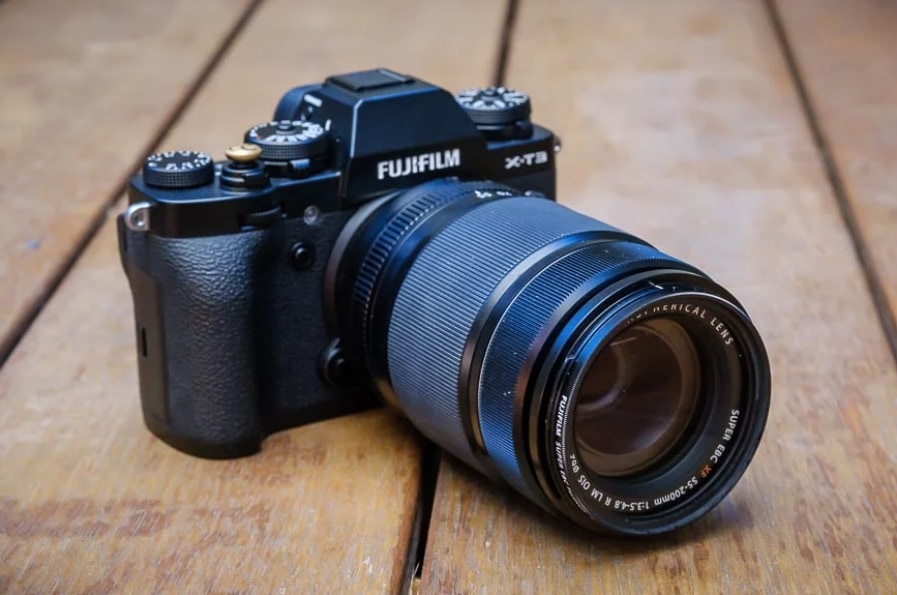
Attached to a Fujifilm X-T3 | © Greg Cromie
When paired with a camera such as the X-T3 (see image above), the combination forms a comfortable balance in your hand.
The XF 55-200mm doesn’t create distortion by being too front heavy or impact your ability to shoot at lower speeds or with the zoom fully out.
Each of the control rings on the lens has a nice buttery smooth travel with just the right amount of resistance. We found that, on the odd occasion, the lens extends due to gravity if held pointing down. A minor issue as you generally work out your zoom distance once you bring the camera up to your eye.
Just like the smaller XF 18-55mm lens, this one also features Optical Image Stabilisation (OIS). This is a great aid when photographing moving objects such as wildlife at the full telephoto end of the range.
Speaking of tracking subjects, the autofocus on this lens is incredibly quick and accurate.
The Fuji XF 55-200mm is able to capture focus quickly at any focal length and ensure you achieve clear and sharp images. Regardless of the focal distance, you’re guaranteed edge to edge sharpness.
In general, the autofocus system is quite responsive and quick to secure focus with no hunting. However, in lower light settings the focus hunting starts to become more obvious. While this can be corrected to some degree with IOS, the issue is worth pointing out.
The XF 55-200mm currently retails for just under US$700 and for that, you’re getting a high performing lens that will deliver exceptional image quality.
Fuji also has on offer the optically brilliant XF 50-140mm f/2.8 that’s weather-sealed but does not have as long a range. This lens is over twice the price at around US$1,600.
If you did decide to complete your kit with this lens and the Fuji XF 18-55, you would have everything you need for a holiday adventure and never miss a shot. You’d have a wider zoom for landscapes and street work. Then you’d have the Fuji XF 55-200 to capture incredible detail in architecture or to capture wild animals on safari.
A lens of this nature, with its excellent image quality, fast focusing performance and great focal range, could be used in a number of scenarios. Travel photography is one of them. After all, you want to be able to return from your travels with the most amazing images you can get.
4. Fujifilm XF 23mm f/2 R WR
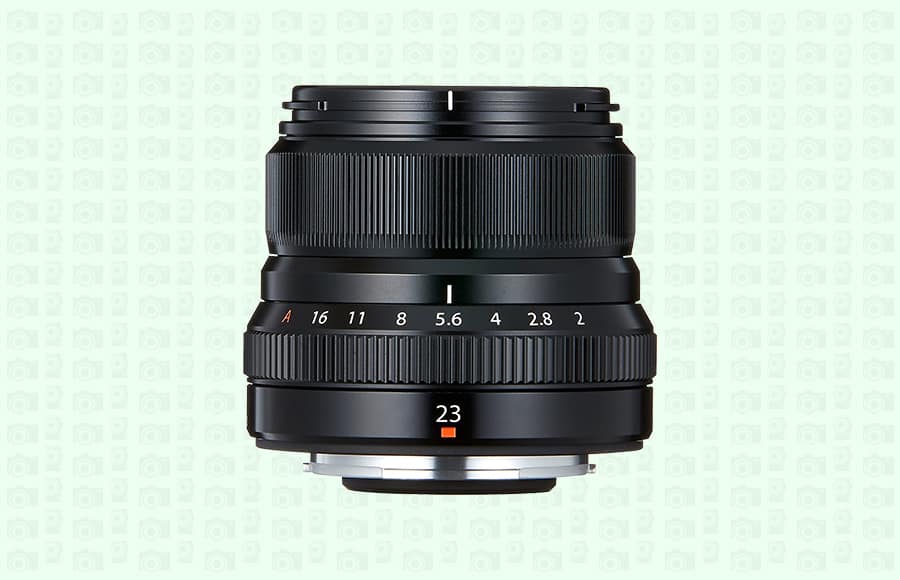
- Super small and portable
- Weather and dust resistant
- Fast and silent autofocus
- Great in low light
- Slightly soft edges when wide open
- No image stabilisation
As you know, there are many different types of travel experiences to be had. And every situation requires a certain type of lens to ensure that you capture what you want to remember. The temptation is always there to take everything just in case you don’t have the right lens and miss a shot.
What if you went in the other direction and decided to just take one lens with you – and not a zoom? Just a single prime lens!
In my opinion, the Fujifilm XF 23mm f/2 is the perfect lens to take with you when you want the most minimal kit you can carry. People will call you crazy but you must have confidence that you can make it work – in the right setting. The Fujifilm XF 23mm f/2 is the best Fujifilm travel lens to pull this off.
This is one of the smallest lenses in the Fujifilm lineup and is part of a series of re-designs that Fujifilm has carried out on a number of lenses with popular focal distances.
For example, the optically brilliant Fuji XF 23mm f/1.4 is one of the sharpest Fujifilm lenses available. It’s also one of the oldest lenses as it was one of the first Fuji primes on the market.
Recently, Fujifilm released the XF 23mm f/2 in a much smaller and weather-sealed body. This new Fujifilm lens has a unique design to it and it’s incredibly compact.
Other lenses in this re-release range are the XF 35mm f/2, the XF 50mm f/2 and the XF 16mm f/2.8. These prime lenses all have a similar retro design and size to keep the range connected.
When we say that this is a tiny lens, it really is: it has a diameter of only 60mm and a minuscule filter thread of 43mm. The total length of the lens is 51.9mm. A lens of this size would be well suited to a camera such as the Fujifilm X-T200, the Fujifilm X-T30 or even the Fujifilm X-E3.
Regardless of its size, this 23mm f/2 prime lens is incredibly well built and tough.
However, don’t be deterred if you were considering pairing this with a Fujifilm X-T3 or the new X-Pro3 . These lenses, given their retro design, look right at home on one of those flagship camera bodies. And at only 180gm, you could comfortably pair the lens to have a simple travel kit that weighs under 700gm.
Or, pair the lens with the smaller Fujifilm X-E3 and your travel kit drops to just over 500gm. With weight like that, you could hand hold your camera all day and not notice any strain or fatigue. You could get away with not having a camera bag and just keep your kit safely wrapped in your day-bag.
It’s that kind of convenience and simplicity that makes the weather resistant Fujifilm XF 23mm f/2 the best Fuji prime lens for travel – check out the video below… but don’t try this at home!
Despite its size, the Fuji XF 23mm is a very user-friendly lens as it sports both a marked aperture ring and a manual focus ring. These are both of a suitable width to identify with your left hand and control them accurately. Even with such a narrow barrel, you don’t feel like you’re creating a claw with your hand just to turn them.
When it comes to usability, this Fuji lens has incredibly quick autofocus in both good light and in low light. In fact, it’s one of the fastest autofocus lenses in the entire Fujifilm range.
What’s more is that due to the small size of the lens, its internal glass and focus motors, it draws hardly any power from a standard Fujifilm battery.
You can get far more shots with a lens of this style than from its much bigger brother.
While this lens does not feature image stabilisation, it does have a wide aperture of f/2 that allows for great subject separation and ample light to pass to the sensor.
Plus, given it’s so light, you have a far greater chance of hand-holding this lens while shooting at slower shutter speeds.
One of the only setbacks about this lens is that it delivers slightly soft edges when shot at f/2. Stepping down to f/4 and beyond seems to remedy this issue.
The Fuji XF 23mm f/2 currently retails for under US$450 and that’s in comparison to the original XF 16mm f/1.4 which retails for double that. Enough said really, as this is incredible value for money, especially for travel photography.
It’s a daring traveller that ventures out with a single lens with a 35mm equivalent field of view. But then again, this is about as close as you can get to the view our eyes naturally gain.
There’s something compelling in being able to capture that same view – and if you want to zoom, then do it the old school way and use your feet.
Be brave with one of the best Fuji lenses for travel and be rewarded on your next adventure.
5. Fujifilm XF 18-135mm f/3.5-5.6 R LM OIS WR
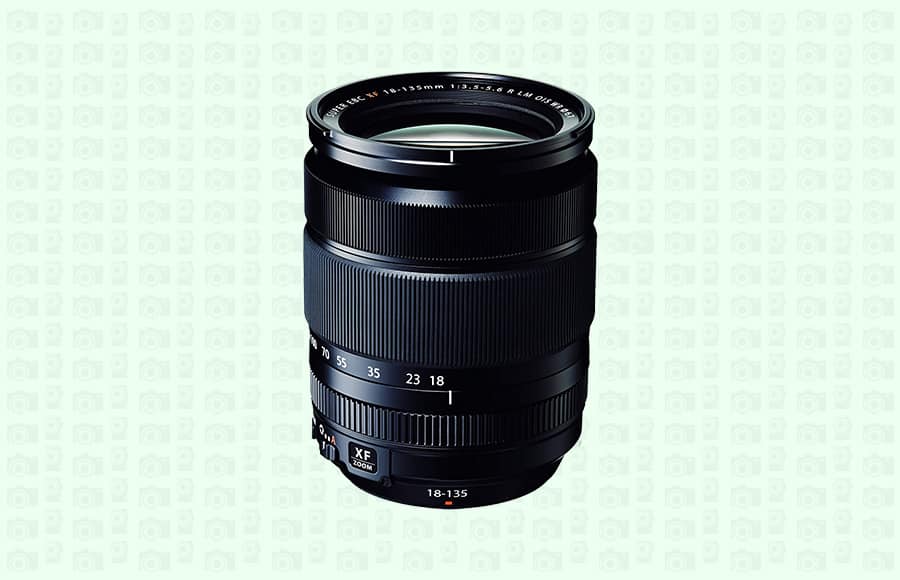
- Ultra versatile range
- Optical Image Stabilisation (OIS)
- Weather sealing
- Great bang for buck
- Softness when shooting in low light
- Some focus hunting
While on the topic of only carrying one lens to shoot it all, the Fuji XF 18-135mm f/3.5-5.6 is just such a lens perfect for travel photography.
If you’re not brave enough to just get by with a single prime like the XF 23mm f/2, then perhaps you’ll feel more comfortable with a zoom like this.
The Fuji XF 18-135mm is able to cover a very wide focal length and also achieve a decent amount of reach with its zoom. So if you’re on a long trip and don’t want to carry too much camera gear but equality want to capture everything, this is the lens for you.
Having that level of flexibility is ideal in a travel situation where you’re going from amazing vistas to tight old-town alleys.
For its range, the lens is actually quite compact and has a similar design quality to the XF 18-55mm f/2.8-4.
It has a long clean barrel with no protrusions and inlaid focus and zoom rings. Being the one lens for every occasion, this beauty also features Optical Image Stabilisation (OIS) and weather sealing.
Alongside its sturdy build qualities, the weather sealing makes the Fuji 18-135mm suitable for all conditions, from rain and hail to dust and snow.
When paired with a weather resistant Fuji body such as the Fujifilm X-T3, you have a completely weather-sealed kit.
The size of this lens can be deceptive as it covers such a wide range of view. The lens has a diameter of 75.7mm and a filter thread of 67mm making it easy to obtain lens filters.
With the zoom in, the lens is 97.8mm long and with the zoom fully out it’s 158mm in length.
In terms of weight, it’s 490gm which puts it comfortably between the Fuji XF 18-55 and the XF 55-200 in size and weight. Regardless, for a lens with this kind of flexible range, it’s certainly a very compact lens.
When combined with a smaller body such as the Fuji X-T30, this lens is only slightly front heavy, but otherwise, the balance is good. When it’s paired with a larger camera such as the X-T3, there’s a more accurate level of balance between the two.
Having said that, shooting with a lens of this nature requires two hands to control and stabilise the shot, so it would be well-matched to any Fuji mirrorless camera body.
The autofocus on the Fuji XF 18-135mm is reasonably good as it can precisely capture subjects in all manners of light with minimal sign of focus hunt. The greatest setback for this lens is how soft the image quality is, especially when shooting in low light.
With good light and aperture dropped to around f/8, you can get great image quality with good colour rendering and sharpness. However, in low light, this lens delivers very soft image quality, which is unfortunate given the level of versatility it offers.
In developing a lens of this nature and at this price point, it’s a shame that the trade-off has to be in the image quality.
Speaking of price, the Fuji XF 18-135mm currently retails for under US$900 and given the level of flexibility it provides, this is a great value lens. Keeping in mind that it’s the only camera lens in this guide with both OIS and weather sealing and a stellar zoom range, this is money well spent.
This Fuji lens is all about versatility and when you’re travelling, especially for long periods of time, versatility is your best friend.
You don’t pack all of your jackets when you’re travelling, you pack the most versatile for the situation. Packing the best loom lens for a range of situations is the very same logic.
Final Words
Whether you’re shooting a travel documentary photo story or simply want to capture your cherished holiday moments on film, you’re going to want to take your camera along for every moment of your adventures.
To get your best shots, you need the kind of lenses that are well suited to travel photography.
On top of that, you probably want to keep your kit relatively minimal and portable – which may mean leaving things like your macro lens at home and opting for a pancake lens or a versatile zoom.
If you’re a user of the Fujifilm system, you have some incredible options in this list. Any of these will serve you well during your next travel adventures.
You'll Also Like These:

I’m a Melbourne-based street photographer and blogger. I love to travel to Japan to photograph and document its dynamic people and culture.
The version of the 10-24 introduced in late 2020 is weather sealed.
Thanks for checking out my article. If you have any questions or comments then please leave them here and I will get back to you. Cheers. G
Hi, really interesting article. I’m a bit late to this one but it says 2021 so I’m going for it :-)
I’ve got the X-T30 and similar kit to the above including the 18-135 recently. I replaced the 18-55 as I thought I’d like a bit more reach but keep to one zoom lens for a compact / versatile kit.
I wondered whether you’d tried the 16-80mm? Looks good on paper – a touch lighter, a touch smaller, wider, sharper, faster – another good all in one – but with a good hit on the reach obviously.
Hi Mark, hi Greg,
Great review as usual! Travelling is really something different from the everyday photographic job, so one needs different tools. For my last trip abroad I took Fujinon 35mm f2 and Samyang (Rokinon) 12mm f2 with me. It was great and versatile, but manual focus on the latter lens is slower than the autofocus obviously. So maybe next time I would take the Fujinon 16mm f2.8 instead. BTW, sorry for being picky, but in the table at the beginning you have a terrific 23mm f2.0 lens, but the description says “Super Wide 2.8 Maximum Aperture”. So, the f value is wrong. Sorry again :-)
Hi Nikita. Thanks for your comment. I agree completely that travel gear is much different. I remember on my first trip to Tokyo a few years ago I took almost all of the lenses featured in this review. My kit bag was far too heavy and in some ways it limited my enjoyment. On my last trick to Tokyo, I only took the X-T3, 23mm f2 and the Fuji X70. Much more fun to work with the limited gear you have and make it work. I am considering taking the 16m f2.8 on my next trip too – great minds…As for the error in the table, I don’t create those so I will make sure that the person responsible is fired! Just jokes. We will get it sorted. Thanks again. G
Leave a Comment Cancel Reply
👋 WELCOME TO SHOTKIT!

🔥 Popular NOW:

Unlock the EXACT blueprint to capture breathtaking iPhone photos!
Shotkit may earn a commission on affiliate links. Learn more.
Best Fuji Lenses for Stunning Travel Photos (In 2024)
Trying to pick a lens to buy can be a super daunting task. I remember when I finally decided to upgrade from the kit lens that camera with my camera, and I had to do SO MUCH GOOGLING. How can you possibly decide what lens is best for you? It came with learning a ton of terminology I had never grappled with before: Aperture. Focal length. IQ (Image Quality).
There is a sea of choice and as beginners looking for information it’s hard to know what’s going to be best.
There there is the fact that lenses are expensive .
The last thing you want to have happen is that you buy a lens and then you don’t like it! 😱
I personally own and have purchased all the lenses in this guide (except one I borrowed 😁), so I can provide you with lots of sample images taken with each lens to help your decision-making process!
Read on for a guide on picking a Fujifilm lens for travel , including information on how to choose a lens based on the kind of pictures you want to capture, and my top pick if you have to pick just ONE lens .
This post was originally published in January 2019, and has been updated for Summer 2024 with the latest additions to Fujifilm’s lens lineup.
What makes a great lens for travel?
I have a few main criteria when picking lenses for travel. Any lens needs to match at least 2 of the following three criteria:
- Lightweight – You don’t want to have shoulder pain from carrying a ton of gear by hauling heavy gear around for long hours while traveling.
- Versatile – You’ll find no ultra-specialty lenses in this guide, only meant for one thing. Every lens needs to help me in a couple different ways.
- Necessary – Whether I absolutely need to pack the lens because I’ll be in a special situation, like shooting wildlife.
Hence, all of the lenses I include here are at least two of these things, and hopefully they are more like all three!
Why did I pick Fujifilm?
Back in the day when I started looking for a camera, a friend of mine who majored in Film in college unequivocally recommended that I start my photography journey with Fujifilm .
A big part of the draw is that Fujifilm focuses on mirrorless cameras , which are smaller and more light-weight than bulky DSLRs. When I know that my images will end up on this blog, rather than a billboard, I don’t need the difference between the 24 megapixels of the $1,000 Fujifilm X-T2 and the 30 megapixels of the $3,000 Canon 5D Mark IV.
I will keep my extra $2,000, thanks!
And in turn, I have a camera that’s light enough to pop in my day bag without me noticing the weight.
That can be a huge benefit when you’re traveling, because the last thing you want to do is leave your camera in your room because it’s too heavy and you don’t want it to weigh you down.
Best Fuji Lens For Travel Photography
As I said before, I personally own or have extensively used all of these Fujifilm lenses. So you know you’re getting recommendations based on my experience!
If you have any questions about them , please LEAVE A COMMENT! I am more than happy to help you pick the lens that is going to meet your individual needs and help you capture the kind of photos you dream about 😄
Legend WR - Weather resistant (can withstand rain and below freezing temperatures). OIS - Optical image stabilization (helpful with zoom lenses to avoid blurry photos). ★ - My all-time favorite lens!
1. Fujinon XF 16mm f1.4
This is one lens that I always bring with me when traveling. A wide-angle lens is a super necessary part of the traveler’s arsenal. If you aren’t familiar with wide-angle lenses, it essentially means that you can fit more in to the picture than with a typical lens. This can be great, but it also means sometimes you need to get really close to something in order to use this lens and get the framing that you want.
Use this lens for: Landscapes, tight indoor spaces, low light photography, astrophotography, architecture.
The reason I think a wide angle lens is necessary for every traveler is because these kinds of situations are the ones we encounter a lot.
- Want to get that beautiful mountain landscape? Wide angle.
- Want to photograph that impressive church or parliament building? Wide angle.
- Want to capture people in the context of an landscape, instagram-style? Wide. Angle!
- “Follow me” style portraits? If that’s what you want, you need a wide angle!
There are a lot of shots you just miss if you don’t bring a wide angle lens.
What makes this lens special This lens can focus very closely and has a very wide aperture. What it means is you can get bokeh (blurry background) from a wide angle lens by getting close, which is not a very common thing at all. The wide aperture also makes it a great candidate for night photos, I’ve used it to take plenty of photos of stars and northern lights!
My best tip for using a wide-angle lens is GET CLOSER any time you are using it and you are not shooting a landscape!
If you’re still not sure, you can read my detailed Fujifilm 16mm f1.4 review for more sample images and an in-depth look at this lens.
Alternatives: Fuji’s other wide-angle lenses
Prime lenses : These lenses don’t zoom, but are often lighter and more compact than their zoomable counterparts. Fuji is known for its primes, and you can save hundreds of dollars if you don’t really need the f1.4 aperture and can sacrifice a little sharpness.
- 16mm f2.8 WR – Very affordable alternative to the 16mm f1.4 which was just released last year (in 2019). Weather resistant, compact, and has consistently great reviews .
- 14mm f2.8 – Has a wider angle but is not weather resistant. A good option for astrophotography or taking pictures of the northern lights.
- 18mm f2.8 – Affordable and compact wide angle lens, but not weather resistant.
Zoom lenses : Fuji has a number of wide to mid-range zoom lenses. There are a few besides these, but these are the most modern and/or the ones with the best quality. You can find them at an entire range of price points as well.
- 16-55mm f2.8 WR – Considered the highest quality wide-to-midrange zoom in Fujifilm’s lineup. Weather resistant, though a little bit on the heavy side. With the the latest Fujifilm camera bodies you can even bundle this lens as your kit lens for a steal.
- 10-24mm f4 – Possibly the best lens for landscape photographers. Super versatile because it’s a zoom, but only f4 which is not really enough for low light. It does have optical image stabilization (OIS), which will help with handheld shots.
- 16-80mm f4 WR – Fuji’s newest zoom offering (as of January 2020). Reviews for this lens are, however, mixed at best. Many are waiting for firmware updates to see if some of the key focus issues are resolved. Has optical image stabilization (OIS).
The reason I chose the 16mm f1.4 over these lenses is I wanted to be able to take low light photos , for example photos of the northern lights or stars. But, still have the flexibility of a lens that isn’t “ultra wide”. Any of these cameras can also take low-light photos, but you’ll need to hold the shutter open for longer, which could mean the stars have moved. Plus, since it’s weather resistant, I can use it in rain, snow, and winter which is important for me!
Check current price for Fuji's 16mm f1.4 on Amazon
2. Fujinon XF 35mm f1.4
I’ve owned this lens for a couple years now, I’ve added new lenses to my kit in the mean time, but none of them really displaced the 35mm lens as being my favorite lens I own .
It’s not just me – a lot of people say that the 35mm f1.4 lens by Fujifilm is the standard by which all other lenses should be judged. It’s super sharp, has gorgeous bokeh, and the image quality is just really, really beautiful. You can take a picture of garbage with this lens and it will look like magic. Seriously.
Use this lens for Everything! This is my all-time favorite lens.
The first big trip I took this lens on was Japan, where I was still using a super low-end camera that didn’t even have a viewfinder – meaning, I was composing all my photos by looking at the LCD screen. Even with the low-end camera body (and the very sad fact that I did not shoot in RAW :sad:), I captured so many beautiful photos in Japan.
The fact that these photos look so good is a testament to the fact that the lens matters more than the camera when it comes to getting great shots. Yes, having both is best, especially in extreme conditions (low light or fast-moving subjects) but in 90% of travel scenarios, the lens is what is responsible for the beautiful image.
Now, this lens is one of the oldest lenses that Fuji makes. So you need to be aware that it has some drawbacks – it is slower and louder to focus than more modern lenses. It’s simply a fact that technology has progressed since this lens came out.
For me, even with those two facts, I love the images created by this lens so much that I don’t mind. It normally doesn’t affect me at all, but you should be aware that more modern “versions” of this lens like the Fujinon XF 35mm f2 have greatly improved on these issues. That said, I take the f1.4 over the f2 any day!
Alternatives The Fujinon XF 35mm f2 is a very good alternative to this lens. It’s fast to focus, compact, weather sealed, and costs about $200 less. The question for you is whether you are really looking for that extra magic from the original lens – something only you can decide!
Check current price for Fuji's 35mm f1.4 on Amazon
3. Fujinon XF 23mm f2 WR
I originally bought this lens for an upcoming trip to Iceland during the winter, because I knew that I needed to have more than one weather-resistant lens. I already owned the 16mm lens, but I needed something that would be useful for everything in between.
This lens has a couple of key benefits: it focuses really fast and quietly (meaning, great for snapshots but also video), it’s very lightweight, and of course it is weather resistant so you can feel safe using it in rain and snow.
Use this lens for Just about everything!
Here you can see the snow is falling everywhere and I am basically unconcerned about using this camera in very low temperatures. Officially, Fujifilm’s weather resistant cameras and lenses operate as low as -10°C / 14°F. I’m not sure if I’ve gone lower than this before, but with the wind and cold it would not surprise me (especially when I was out photographing northern lights, brrrr!)
The two most classic focal lengths are the 23mm and the 35mm on a crop sensor. That’s because these lengths are very versatile – in fact, 23mm is considered to be the same as the human eye, making the photos feel natural in what they contain.
The fact that the Fujifilm 23mm XF f2 lens has a maximum aperture of f/2 means that it’s much lighter than anything at f1.4, just because it takes a lot more glass to accomplish wider apertures. That said, f2 is perfectly good for a lot of low light photography. Check out this slightly longer exposure of the parliament building in Budapest.
Alternatives The main alternative is the 23mm f1.4 lens, which is an absolutely gorgeous lens. If you are looking for a lens that is a little bit wide angle but can still do very low-light, it is a great option. Unfortunately that lens is not weather resistant, so you can’t take it everywhere you can take the 23mm f2.
Check current price for Fuji's 23mm f2 on Amazon
4. Fujinon XF 50-140mm f2.8 WR LM OIS + 2x Teleconverter
I’m not going to lie, this lens is a bit of a beast. It’s larger than my head (though that’s not to say I have a particularly large head). That said, I’m not a big girl, and I had no trouble wielding this lens while I was on safari to take wildlife photos. Yes, the lens is heavier than any of Fujifilm’s prime lenses, but there are photos you can’t capture without it . Cropping a photo can only get you so far. If you’re going somewhere in nature where you think you’ll see some animals, I can’t recommend anything more than to bring a powerful zoom lens with you.
Use this lens for: Wildlife, safari, nature, portraits
This photo shows BOTH the 50-140mm attached, as well as the 2x teleconverter. Without the teleconverter, it would be about 2 1/2 inches shorter.
How does a teleconverter work? A teleconverter is basically like a smaller lens that you attach to an existing lens. It’s going to allow that lens to zoom in further, but it also reduces the amount of light getting into the lens. For example, if you attach a 2x teleconverter to the 50-140mm f2.8 lens, the lens will have the reach of 100-280mm f5.6. This is a great way to be able to zoom in twice as much as you could before, but do be aware, teleconverters are expensive and basically cost as much as a smaller lens themselves!
Did you know? Zoom lenses with a longer focal length (meaning, bigger number of “mm”) are often used to take portraits? This is because they provide the face with nice proportions, and compress the background to better isolate the subject!
As you can imagine with these photos above and below, I could’ve never captured them on a different lens. But they are somehow magical in their own right, and totally worth it.
Alternatives: Fuji’s other telephoto lenses
- 100-400mm f4 is the main alternative if you’re specifically looking to shoot wildlife . The real question here is whether you want something portable or you care about getting CLOSE. For mega, mega close photos, you’re going to need the 100-400mm lens. But if you are looking for a flexible middle ground, stick with the 50-140mm.
- 55-200mm f3.5-f4.8 is probably considered the best bang-for-your-buck zoom from Fuji. Pros: Affordable, great range, great image quality, comparatively lightweight. Cons: Not weather resistant, not as wide aperture, cannot be extended with a teleconverter. It has consistently stellar reviews on Amazon and around the web despite those tradeoffs.
Check current price for Fuji's 50-140mm f2.8 on Amazon
5. Fujinon XF 27mm f2.8
Did you know that tiny lenses like this are often called pancake lenses ? Because they are flat and compact like a pancake! If you’re looking for a lens to put on your camera to bring your camera with you anywhere, this would be a great lens for that. It’s so light it feels like nothing around your neck.
Use this lens for: Street photography, sharp landscapes, keeping a low profile
But my most prominent usage of this lens is when I want to keep a low profile, and not look like I have a thousand dollars hanging from my neck. Or, I want to be able to zip up my camera under my jacket without it being too noticeable.
For example, I went to Rio de Janeiro , which is unfortunately famous for petty theft against tourists. But at least with this lens and a light jacket, I could snap some photos without looking too much like a walking target the whole time. The bigger challenge was how much I was sweating while wearing a jacket in Rio 😂
Photo taken in Rio de Janeiro on Copacabana Beach
Besides just for places where you don’t want to flash a huge camera and lens setup, it can sometimes just be nice to pack light and not worry too much about switching lenses. If I need to take just one lens, it’s probably either this one or my favorite lens (described at the bottom of this post!).
Alternatives The 27mm is not the only Fuji pancake lens available, you can also pick up the 18mm f2.8 .
Both can be good options, it just depends on whether you want to have a wide-angle lens or a more neutral focal length. Given I already own the 16mm, adding the 18mm would be too similar. I also own the Fuji kit lens which starts at 18mm, so it would be too much repetition all around.
Check current price for Fuji's 27mm f2.8 on Amazon
Compatible Fujifilm X-Series Cameras
You can choose any X-mount compatible camera. I personally use and love the Fujifilm X-T2 , which comes with me absolutely everywhere. But the Fujifilm X-T30 (linked below) has the same image quality, just slightly less performance and is not weather-resistant (which maybe you don’t really need, it depends on where you’ll travel!).
The important thing is to invest in lenses because new cameras are released every year, but lenses stand the test of time and will serve you for many years to come.
Plus, lens quality affects your photos more than the camera in the vast majority of cases. Of course, a high end lens on a cheap camera is like putting a sports car motor in a Buick, but we’ve all got to upgrade gradually so it’s totally fine!
You don’t have to spend all your money at once, just start small and pick a camera and a lens that is going to give you the photos you want. You can always upgrade over the years 😄
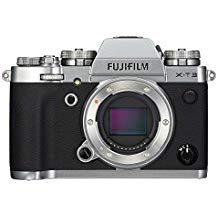
The latest version of the Fujifilm X-series flagship cameras
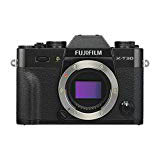
Same quality as the X-T2 but without weather resistance.
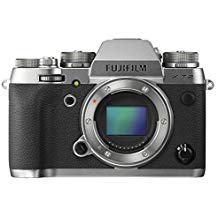
The camera I use. Still excellent and can be found at good prices.
TIP – Fuji is about to release the Fujifilm X-T4 . Unless you need the in-body stabilization or new flip-out LCD screen, you can get the same sensor in the Fujifilm X-T3 at a significant savings!
Lenses recommended in this post
As I said at the beginning of the post, these are all lenses that I have bought with my own money or (in one case) borrowed and traveled with extensively. If you have any questions , please feel free to leave me a comment and I’ll do my best to help you determine which lens is going to help you capture the travel photos you want!
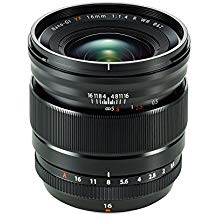
Landscapes, architecture, astrophotography.
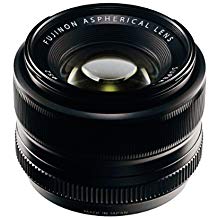
General purpose, classic, sharp, the gold standard.
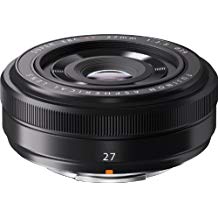
Landscapes, street photography, low profile.
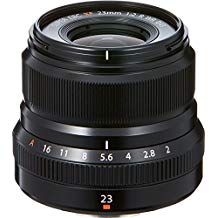
General purpose, versatile, everyday lens that's weather-resistent
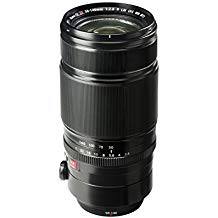
Wildlife, safari, portraits, zoom
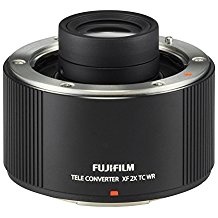
Extend zoom ability of the 50-140mm lens.
More Fujifilm accessories
Lenses are probably the most important piece of your arsenal when it comes to producing beautiful images. But there are also lots of other useful Fujifilm accessories that will help you capture images you can’t get without them! Keep reading this post for accessories to add to your travel photography kit .
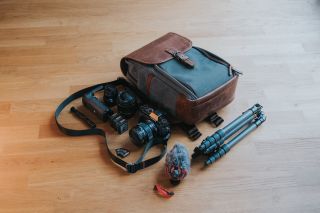
In my 5+ years shooting with Fuji cameras, these are the best Fujifilm accessories that can help you boost your image quality and create stunning photos.

About the author
Hi there! I'm Monica, an American expat living in Germany for over six years and using every opportunity to explore the world from my homebase in Berlin. My goal is to capture my memories in photos and posts that show how easy it is to start from scratch and travel the world by working abroad.
Follow along on Instagram , Twitter , Bloglovin , & Facebook .
You might also like...
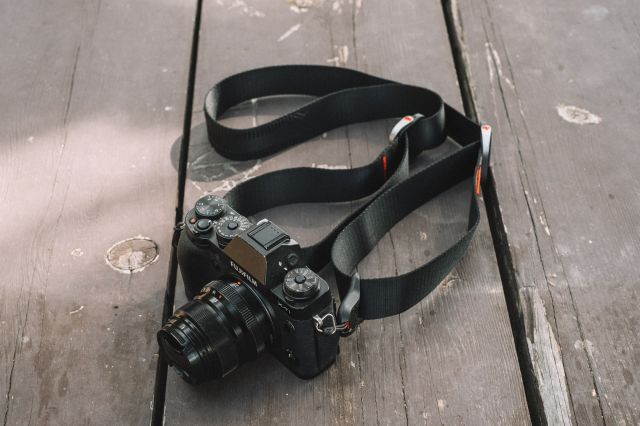
Review: One year with Peak Design's Slide Lite camera strap
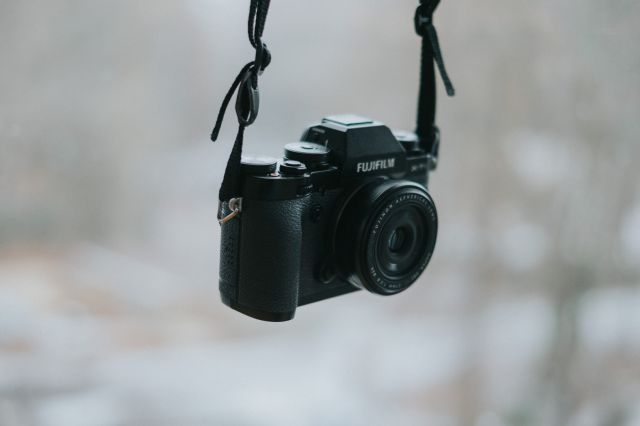
Pros & Cons of Fujifilm's 27mm Pancake Lens
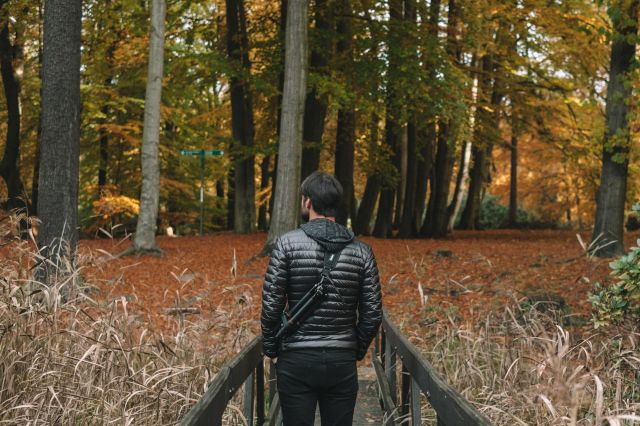
How to choose the best budget travel tripod (you'll actually use)

- Inappropriate
- Hate speech
- Spam or scam
- Copyright infringement

- Amazon Newsletter
- About Amazon
- Accessibility
- Sustainability
- Press Center
- Investor Relations
- Amazon Devices
- Amazon Science
- Sell on Amazon
- Sell apps on Amazon
- Supply to Amazon
- Protect & Build Your Brand
- Become an Affiliate
- Become a Delivery Driver
- Start a Package Delivery Business
- Advertise Your Products
- Self-Publish with Us
- Become an Amazon Hub Partner
- › See More Ways to Make Money
- Amazon Visa
- Amazon Store Card
- Amazon Secured Card
- Amazon Business Card
- Shop with Points
- Credit Card Marketplace
- Reload Your Balance
- Amazon Currency Converter
- Your Account
- Your Orders
- Shipping Rates & Policies
- Amazon Prime
- Returns & Replacements
- Manage Your Content and Devices
- Recalls and Product Safety Alerts
- Conditions of Use
- Privacy Notice
- Consumer Health Data Privacy Disclosure
- Your Ads Privacy Choices

COUNTRY / REGION
Dummy textDummy textDummy text
SELECT YOUR COUNTRY OR REGION
canada ( English , French )
japan ( Japanese , English )
Philippines
belgium ( French , Dutch )
netherlands
switzerland ( German , French )
switzerland ( German , French , Italian )
New Zealand

Travel Essentials for Photographers
Travel is one of the big reasons why people buy a camera, so let’s take a look at what you need to take with you the next time you venture away from home.
Going on vacation is one time when you really want to have your X Series camera by your side. You’ll be able to create better pictures than you ever could with your smartphone and produce a set of photos and movie clips that you and your friends and family will love for years to come. Let’s have a look at some essentials that should always be in your camera bag when you go away, whether it’s an overnight stay or a round-the-world trip.
Spare Batteries and Charger
There isn’t much in life more frustrating than seeing a superb opportunity for a photo when your camera batteries have died. It’s worth having a spare tucked away in your bag should the worst happen. And make sure you don’t forget to pack your battery charger, and a travel adapter if you’re going to a country where mains sockets are a different shape.

Some X Series cameras support USB charging, which is very useful when traveling. Connect your camera to a smartphone charger or USB power bank to top it up and give yourself a few more hours to create.
Spare Lenses
A standard zoom is a great all-round lens, able to tackle virtually every subject you’ll come across when you’re traveling, but there are some situations where an extra lens can expand your creative horizons.
If the great outdoors is going to be a big feature of your trip, then a telephoto zoom like FUJINON XC50-230mmF4.5-6.7 OIS II, XF55-200mmF3.5-4.8 R LM OIS or XF70-300mmF4-5.6 R LM OIS WR will get you closer to distant subjects, like wildlife or sports. They’re a great companion lens for a standard zoom, like XC15-45mmF3.5-5.6 OIS PZ or XF18-55mmF2.8-4 R LM OIS, or XF16-80mmF4 R OIS WR and – because they’re X Series lenses – they won’t weigh you down. By the way, OIS means Optical Image Stabilization: a great attribute for zoom lenses that helps reduce camera shake.

If you like the idea of getting closer to your subjects, but don’t want to have to physically swap between lenses, take a look at the XF18-135mmF3.5-5.6 R LM OIS WR or XF18-120mmF4 LM PZ WR ‘superzooms’. They cover focal lengths from wide angle, through standard, to telephoto in a single lens – a great option for travel photographers.
Memory Cards
Next to running out of battery, running out of storage space on your memory card is definitely one to avoid. Faced with having to delete pictures or buy a new memory card is really difficult if you’re in the wilderness.

The answer is to take plenty of spares with you. SD cards are cheap these days, so get a couple of spares and keep them safe in your bag.
We started off this article by saying the pictures you’ll make with your X Series camera will be lots better than what you can achieve with a smartphone, but that’s not to say that devices like this have no place on a trip. Pair your camera with your phone using the free FUJIFILM Camera Remote app and you’ll be able to share images with friends and family as you travel – kind of like a virtual postcard.

The app connects via Bluetooth and Wi-Fi, which are built into X Series cameras, and create a direct connection, even in the wilderness. Try the app before you leave, so you know what to do when you are out and about.
Cleaning Gear
A clean camera is a happy camera, and clean lenses give the best image quality, so make sure you give your gear a good cleaning before you go away – it’s a good routine to get into.
A can of compressed air is good for getting rid of dust on the body, but avoid trying to clean the sensor yourself as it’s an extremely sensitive part of the camera and should be attended to by a professional. A microfiber cloth will clean the touchscreen without scratching it, but for the lens itself, a lens cleaning cloth is the best option. Start at the outside and work inwards to avoid pushing grease and grime into hard-to-reach areas at the edges.

Take all this with you so you can clean on the move – you’re likely to get your camera dirty when you’re visiting places like beaches and parks, where sand and dirt can cause problems.
And Finally…
You’ll need something to carry all of your gear in. A dual-purpose bag is good when you’re traveling – something that can hold your camera kit and other items, like food, water, and a raincoat. Bear in mind that a rucksack is more comfortable to carry for long distances, but harder to access when you want to make a picture.

Your Next Steps
- CHALLENGE We want to see your top five photos from your next trip away – pictures that tell the story of your adventure and make us want to go there right now. Post them to social media with the hashtag #MyFujifilmLegacy. You can also submit your work here for a chance to be featured on our social media channels.
Header image © Afton Almaraz
You May Also Like...
Trending now.

- Latest posts
- Search forums
- X Camera Gear & Lens discussions
- X Camera Discussions
Misc. X Camera Travel kit recommendations
- Thread starter steveofstonehenge
- Start date May 25, 2021
steveofstonehenge
Well-known member.
- May 25, 2021
My wife and I are planning our first international trip in October. We plan to visit Quebec, Nova Scotia, and Acadia Park in Maine. I plan to take all my Fuji gear except the 50-140 f2.8. So my longest lens will be the 16-80 f4. My widest lens will be the 16 f1.4 for landscapes particularly in Acadia. Then I'll use mostly the 23 f2 (and maybe the 50 f2 occasionally) for street photography. Lastly, the 35 f1.4 and 50 f2 I'll bring along for fun and variety. Since it is a car trip, I'll have plenty of room so not too worried about space. This will be my first extended trip with Fuji gear. I would appreciate comments and feedback on this plan. Thanks for the advice in advance.
Work. Wander. Make images as I go.
steveofstonehenge said: My wife and I are planning our first international trip in October. We plan to visit Quebec, Nova Scotia, and Acadia Park in Maine. I plan to take all my Fuji gear except the 50-140 f2.8. So my longest lens will be the 16-80 f4. My widest lens will be the 16 f1.4 for landscapes particularly in Acadia. Then I'll use mostly the 23 f2 (and maybe the 50 f2 occasionally) for street photography. Lastly, the 35 f1.4 and 50 f2 I'll bring along for fun and variety. Since it is a car trip, I'll have plenty of room so not too worried about space. This will be my first extended trip with Fuji gear. I would appreciate comments and feedback on this plan. Thanks for the advice in advance. Click to expand...
Wow, a really open question. As others will tell you, your choice of equipment will depend upon the type of photographs you like to take. If the equipment you are considering will enable you to obtain the images you enjoy then you appear to be well covered. Your lens collection will allow you to photograph from pretty close-up to mildly distant. You have large f/stops, low light, and short depth of field covered. A possible shortcoming in your selection would be Acadia National Park and the shores of Nova Scotia without the 50-140. If you were flying to your destinations, lugging all of that through an airport, and then "humping" (sorry, an old army term) all of that through the park and along the coastline then I would reconsider as well. But, you're driving!! Maybe add your longest lens? Also, I would take a flash for "fill" but that's me. Congrats for finally being able to get out and have a great time!!
Carry on as if I'm not here...
jaberg said: On a car trip I’d likely “pack ’em all” into a Pelican case and then draw a “day bag” from the library. Click to expand...
Overall, it looks like a nice set, but I would want to extend the range a bit on each end if I had the lenses to do so. If space isn't an issue, I would be hard pressed to leave the 50-140 behind. But the biggest hole that I see is on the short end as I often shoot landscapes in the 10 to 12mm range. Of course whenever water and sky are involved, you are going to want a suitable tripod, some ND filters, and maybe a remote release. I'm looking forward to seeing your images when you return. It sounds like a great trip!
jaberg said: I’d likely “pack ’em all” into a Pelican case Click to expand...

DIY Trekpak for under $20 (2023 Update)
Ostracod said: I often shoot landscapes in the 10 to 12mm range Click to expand...
steveofstonehenge said: I may have to reconsider the Fuji 10-24. Click to expand...
For Acadia my most used lens was the 10-24 - perhaps consider renting it. Have fun!
Sounds wonderful. When I was fresh out of high school I spent two months in Orono, Maine then a month in Exeter, New Hampshire. Nova Scotia is high on my list of places I want to visit. I would also recommend taking all your gear. For sure, take the 50-140. Medium telephoto is fantastic for landscape. If I only took two lenses that you listed it would be the 16mm and 50-140.
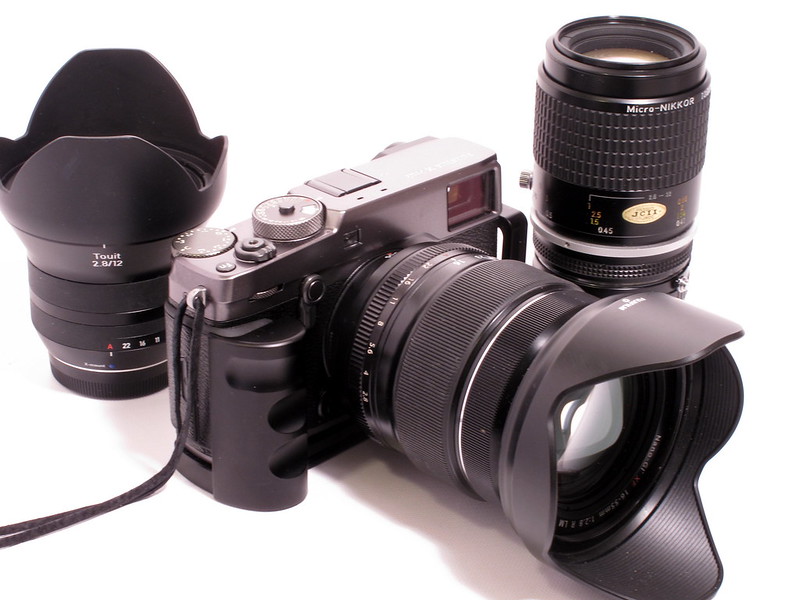
FullMetalHipster
America's premiere power-hipster.
Since you're doing a car trip I'd recommend bringing your 50-140 since you won't have much control over how you position yourself. So here's what you should do, bring your 23 prime (smaller F2 version if you have it) and the 50-140. thats it. nothing else. that'll cover 99% of your trip. Normally i wouldn't recommend bringing a big zoom but you did say it's a car trip and believe me i know from experience shooting photos from a car is SO much better w/ a zoom. especially getting out and shooting beach scapes and landscapes... big relief.
Ostracod said: I like the Pelican cases when I need “ultimate” protection, but for car travel I’ve become quite fond of these padded Vanguard cases. They provide plenty of protection, are much cheaper, can be re-configured on the fly, don’t shout “steal me” quite as loud, and the soft sides are more friendly to car interiors, other luggage, etc. This has been my “everything”travel kit for the past year or so. The case goes with me in the car or camper, then I pull from this set anything I want for a given hike or outing. As you could guess, I prefer more bodies to changing lenses, a function of spending much of my photography time in dusty, sandy environs. Click to expand...
My big trip bag is my xt4, the 3 F2 primes, the 16 1.4, the 16-55 2.8 and my 100-400(If I am going somewhere that has wildlife) A flash, a trigger, and a tripod. Then I bring a smaller bag that I pull from if I need mobility. That bag is tiny and easy to carry, this always has basic supplies and a small shotgun microphone for video in it, some small kits I bring are, the 16 1.4, the 35 f2 and my flash and trigger, the 16-55 and flash and trigger, the 16-55 and the 16 1.4, or 2 or 3 of the f2 primes. It depends on where I am, if its inside I like to have my wider lenses, outside I go for the zoom or tighter ones, do I want to set up a flash or not, stuff like that. For example, lately I have been basically doing outside walks in parks with my wife and baby, or just going to my parents to hang out. My bag currently has the 16 1.4 and the 35 f2 and the flash and trigger. I love the 16 for general purpose and inside shots, and the 35 f2 is an awesome general purpose that isnt wide. It been working well, and using a small bag has stopped me from futsing over lenses.
streetsntravel
Ostracod said: I’ve become quite fond of these padded Vanguard cases Click to expand...
Bohemian Media

Narsuitus said: Here is my Scenic (landscape) Travel Kit: Fuji X-Pro2 weather resistant body Fuji 16-55mm f/2.8 weather resistant lens Zeiss 12mm f/2.8 or Rokinon 12mm f/2 Nikon 105mm f/2.8 macro with Nikon/Fuji FotoDiox adapter Scenic (landscape) Travel Kit by Narsuitus , on Flickr Click to expand...
runswithsizzers
If it was me taking this trip (and I wish it was), then I would be happy to take only the 16-80mm f4 - and, for when I don't want to carry the zoom, the 23mm f2. The way I shoot, those two would cover the vast majority of my travel photo needs.
steveofstonehenge said: I like that Vanguard design. I love the flexibility this bag affords with all those dividers. When I fly on vacation and want camera (which is almost always), I choose between the fStop Gear Guru (25 L) backpack and the Lotus (32L) backpack. These days I almost always choose the 25L Guru because I want to have a really light backpack. Do you recall the model of you Vanguard? Is it something like this one: Vanguard Alta Fly 49T Roller Bag (Black) Click to expand...
Since you are going by car, there is little “cost” to taking everything if that suits how you work. I tend to prefer less gear, even if it is an option, because too many choices tends to make it more about gear and choices. But if it is a situations where opportunities might be once only, a second body as backup might be a higher priority. My philosophy: is there a way a single failure can put me out of commission?
F2Bthere said: But if it is a situations where opportunities might be once only, a second body as backup might be a higher priority. Click to expand...
Up to my ankles
steveofstonehenge said: My wife and I are planning our first international trip in October. Click to expand...
Richard_R said: Less is always more. The first question that needs to be answered is. Is this a photography expedition or a couples holiday where one person is not a photographer? Click to expand...
Primes4ever
- May 26, 2021
If you are taking your car, I would not limit myself. The area you are planning to cover is familiar territory for me and Nova Scotia has stunning landscapes, especially Cape Breton. One other question I have is how long are you going for? Quebec is a very large province and Nova Scotia is a five hour drive to traverse through New Brunswick just to get to the border with Quebec. It is another three hour drive to reach Quebec City. A trip to Quebec City and touring the Gaspe peninsula is a 7-10 day trip on its own. It is stunning and worthy of a separate trip to do it justice. Nova Scotia is very close to Maine and sets up nicely for a car trip. You could easily spend a couple weeks there. Cape Breton Island is considered one of the most beautiful places you will ever visit. The Cabot Trail is approximately 300 km long. Some people drive it in one day which I consider criminal. My personal recommendation is to book accommodations for at least four days in the Cape Breton Highlands and really explore. You could also spend the same time on the Bay of Fundy and Halifax/ Lunenburg. The area you are planning to visit has stunning landscapes so taking your best lenses for that purpose are advisable. If you like to golf as well, I recommend you bring your clubs.

Fujifilm X-S10 Review • The perfect travel partner

Fujifilm is considered by many to be the champion of APS-C sensors. Heavyweights like the X-T4 and X-Pro3 dominate the ring with top-notch performance and an equally great price tag. What is available to a person with a more modest budget who still wants to enter the ring? Check out the Fujifilm X-S10, a new model in the X line at a reasonable price.
Despite the lower price point, Fujifilm has included an impressive array of features in this camera, including the X-Trans 4 BSI CMOS sensor and X-processor 4. Image quality is as high as the flagship model. But since this is a different price point, there are of course small trade-offs. We will discuss all this in the proposed Fujufilm X-S10 review.
Fujifilm’s new X-S10 camera is a completely new mid-range camera line that falls somewhere between the X-T3 and X-T30 . It has built-in stabilization, making it the most affordable X-Series camera from Fujifilm. Featuring the same imaging pipeline as the flagship X-T4, the X-S10 is in many ways a smaller, lighter and even more affordable X-T4 .
However, the design and ergonomics are slightly different from the typical “retro” style of Fuji X-series cameras. The X-S10 has a more simplistic design, a deeper grip (in this case, more like the X-H1 ). It uses more traditional camera controls (such as the front and rear dials plus the regular mode dial).
Fujifilm X-S10 Design
As mentioned, the Fujifilm X-S10 is a very portable and compact APS-C mirrorless camera. And yet it has a deeper grip, more like an SLR. This is why it resembles the rugged X-H1. However, the X-S10 fits easily in the palm of your hand. Another notable design change for the X-S10 is the use of standard exposure controls and a PASM switch.

Most Fujifilm cameras have a unique combination of discs – ISO disc, shutter speed dial and lens aperture ring. You set them in various combinations to switch the camera to different shooting modes. You have to get used to it to get used to it. The X-S10 aims to avoid this by allowing photographers to grab the camera and start shooting with a familiar set of controls.
The X-S10 has both front and rear command dials for initial exposure settings, as well as a dedicated ISO button on the top panel. The camera is equipped with a standard PASM mode dial with four custom modes. To the left of the viewfinder is an additional unlabeled dial that lets you switch between different film simulations.
The back of the X-S10’s camera is pretty minimalistic. There are only a few buttons for things like menu access, view mode and drive setup, and a joystick. Like the X-Pro3 and X100V , this model lacks a 4-way control button group. The joystick is great for changing the AF point, but navigating the menus is a little easier with the selector buttons.
In terms of display, the X-S10 has a fully rotatable LCD touch screen with selfie mode. 3.0-inch diagonal, 1.04 million-dot resolution, 100% field coverage. Meanwhile, the electronic viewfinder is pretty much the same as on the X-T30. It has a 0.39-inch OLED panel with 2.36M dots, 0.62x magnification.
Several other notable differences between this camera and its larger sibling, the X-T4, are that it uses only one UHS-I SD card slot and is not weatherproof. The camera is very pleasant to hold in the hand during use. The grip is made of magnesium alloy, as are the front and top panels, making the camera overall solid and reliable.
Image quality
The image processing pipeline of the new Fuji X-S10 is essentially the same as that of the X-T4. The cameras use the same back-illuminated 26.1-megapixel X-Trans CMOS 4 image sensor and the X-Processor 4 quad-core image processor 4. Native ISO 160… 12800 with 80… 51200 extension.
Like other X-Series cameras, the XS10 can capture both RAW (including losslessly compressed) and JPEG images. Of course, a full range of film simulations is offered, including the latest version of ETERNA Bleach Bypass Film Sim. Film Simulation goes beyond standard “image filters” and allows you to easily customize the look of your photos in-camera without the need for post-processing.

There is an AUTO / SP (scene position) mode in which the camera automatically detects the scene and adjusts the exposure and image settings. This allows beginners to take easy pictures. However, you can now shoot in RAW in these modes. In addition, the Fujifilm XS10 now also allows you to select the AF point here.
One of the main features of the Fujifilm XS 10 is built-in image stabilization. The Fuji X-H1 was the first X-series camera to offer IBIS, but still had an impressive size in the X Series. In the end, Fuji was able to squeeze its IBIS technology into a slimmer X-T4, which remained nearly identical in size to the X-T3.
The Fujifilm X-S10 5-axis IBIS is 30% smaller and lighter than the X-T4, but offers almost the same degree of stabilization up to 6 stops depending on the lens (the X-T4 IBIS is 6.5 stops). The X-S10’s IBIS is more powerful than the earlier X-H1, which offered just 5.5 steps.
Autofocus and performance
The autofocus system and performance characteristics are generally the same as the X-T4. Phase detection autofocus works on the basis of 2.16 million pixel phase detection. They cover the entire sensor area and have up to 425 user-selectable points. Fujifilm claims the system is capable of capturing focus in about 0.02 seconds and can operate in low light conditions down to -7 EV.
The Fuji X-S10’s burst shooting capabilities are slightly different. The camera can shoot at up to 8 fps with a mechanical shutter, while the X-T4 can shoot up to 15 fps. However, with an electronic shutter, the X-S10 is on par with its big brother, offering blackout-free shooting at 20fps at full resolution or 30fps in 1.25x crop mode.
Fujifilm aligns the X-S10 with people who create both photos and videos, not one or the other. In this way, the camera has attractive video performance without some of the complications aimed primarily at video creators. The maximum video resolution is 4096 x 2160 (AKA DCI 4K) at 29.97 / 25/24 / 23.98 fps. This is without a crop.

The maximum recording on the card is 8 bits 4: 2: 0. An external storage device connected via HDMI can record in 4: 2: 2 10-bit format. The X-S10 can record in any of the Film Simulation modes, but there is also an F-Log recording for further color correction. As usual, Full HD footage can also be recorded. And in Highspeed recording mode, you can select 240 fps for slow motion playback up to 10x.
Connections and power
Fuji’s XS10 camera has a USB Type-C (USB3.2 Gen1x1) port that supports charging and data transfer as well as headphone output. The camera is equipped with a 3.5 mm mini-jack for a microphone, but does not have a separate headphone jack. Instead, a small USB-C to 3.5mm headphone adapter is included. In addition, there is a micro HDMI connector (Type D) and a hot shoe at the top of the viewfinder.
The X-S10 only has one SD card slot which is only UHS-I compatible. The camera supports wireless connectivity (Bluetooth and Wi-Fi) and is compatible with the Fujifilm Camera Remote smartphone app for wireless image transfer, geotagging and remote control functions. The novelty is powered by a rechargeable lithium-ion battery NP-W126S.
Fujifilm X-S10 shares most of the great technology found in the Fuji X-T4 in a more versatile body. Some performance degradation is a well-planned tradeoff. The camera fits perfectly in the hand. Due to its compact size, anyone looking for a really good travel camera will be extremely pleased with it. It will also make the camera very attractive for video bloggers and content creators.
Fujifilm X-E4 Review • The Smallest X Series Camera yet
Akaso brave 7 le review • 4k action camera on a budget.

Hello fellow tech enthusiast
Be sure to check out our homepage and stay updated on the latest news
Join The London Crew: Grab this checklist with 110 things to do in london from a local.
Hues Of Delahaye
9 Best Fuji Lens for Travel [2024] – Fujifilm Lenses Review

Are looking for the best Fuji lens for travel? As someone who shoots all their photos with Fujifilm, I can help!
So, you have the new Fujifilm X-T5 camera, but the kit lens isn’t quite cutting it? Want to dive into the world of travel photography, but you know your current setup won’t be quite right for the job?
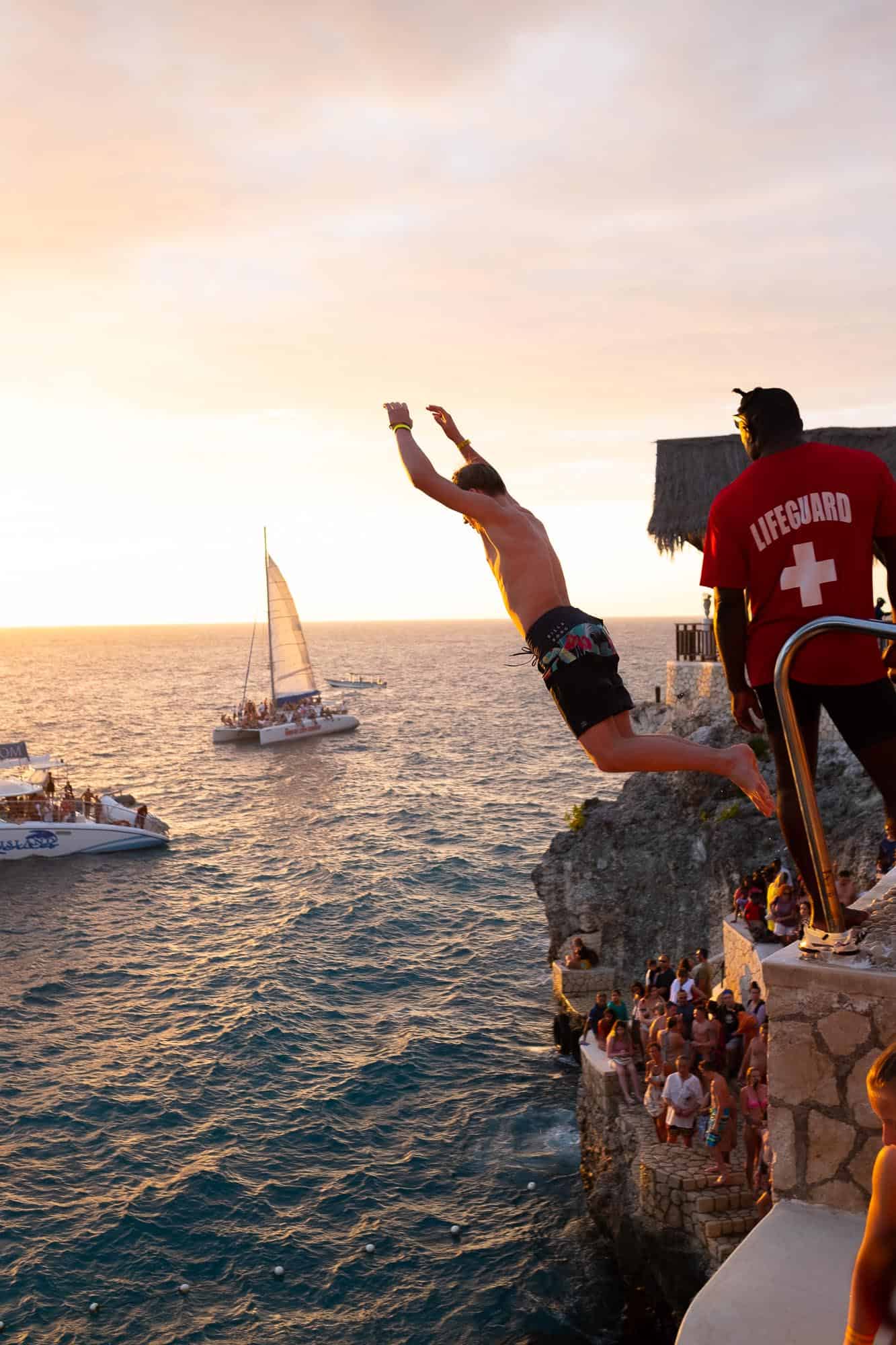
Well, let me help you find the best Fujifilm lens for travel for you as a Fuji enthusiast (aka Fuji fangirl). I’ve owned and shot with the Fuji X-series system exclusively for the last 6 years for my travel blog and clients.
I started with the Fuji X-T2 before upgrading to the Fujifilm X-T4 camera.
I’ve also dropped some major bank on Fuji lenses, starting from the humble kit lens (Fuji 18-55mm f/2.8-4 ) to the Bohek monster that is the Fuji 56mm f1.2 lens and knows that choosing the right lens for your travels can be an absolute nightmare.
The sheer number of options alone is overwhelming. And that’s without diving into the nitty-gritty specs and features of each one.

Fujifilm XF 16-55mm F2.8
The Fujifilm XF 16-55mm F2.8 R LM WR is a high-quality, all-around lens for photographers. With its excellent image quality and focus performance and accuracy, it’s one of the best lenses for travel and it works well with any X-series camera body.
But having the right lens can make a world of difference to your travel photography. So the process of choosing one is an adventure that all travel photographers must embark on at some point in their lives.
The good news is I’ve created a detailed guide to the best Fujifilm X mount lenses for travel on the market for travellers.
I’ve taken various aspects into account and reviewed, in detail, the 9 best Fuji X lenses for travel photography.
Best Fuji Lenses for Travel – Comparison Table
Here’s a quick comparison of my top picks before I get into the full reviews. Remember that all the lenses on this list are the best Fuji lenses.
Meaning they’re intended for use with Fujifilm’s X Series cameras. These are the cameras I’ve owned and the lens I’ve used with this system.
Best Fuji Lens For Travel
When you’re packing for a trip, you want to make sure you have the best photography gear with you to capture all the memories you’ll be making.
So, if you’re a Fujifilm shooter, what are the best Fujifilm lenses for travel? Here’s a list of our top picks:
Fujifilm XF 16-55mm F2.8 R LM WR – Best All-round Travel Lens

- 24-84mm equivalent zoom range for versatility
- Bright f/2.8 maximum aperture for shooting in low light and controlling depth of field
- Weather resistant
- Excellent image quality with reduced distortion and improved sharpness
- Quiet autofocus performance for video
- Relatively large and heavy compared to other Fujifilm lenses in the same category
- More expensive option within Fujifilm’s lineup of lenses
Check Price
My all-around top pick for the best Fujifilm travel lens is the Fujifilm XF 16-55mm F2.8 R LM WR . This is one of the best Fuji lenses (and the Best fuji XF travel lens); it is a versatile standard zoom lens designed for APS-C-format FUJIFILM X-Mount mirrorless cameras.
This also makes it, in my opinion, the best Fuji lens for hiking.
Offering a 24-84mm equivalent, wide-angle to the portrait-length range, capturing various subjects, from wide landscape shots to portraits.
This lens is characterised by its bright f/2.8 maximum aperture, which makes it adept in difficult lighting conditions and offers control over the depth of field.

The optical design of the Fujifilm XF 16-55mm F2.8 R LM WR lens comprises both aspherical and extra-low dispersion elements, which help to reduce distortion and colour fringing for improved sharpness and colour accuracy throughout the zoom range.
Nano-GI and HT-EBC coatings have also been applied to the lens elements to minimise surface reflections and prevent lens flare and ghosting.
The Fujifilm XF 16-55mm F2.8 R LM WR lens also features a weather-resistant design with 14 sealing points, enabling worry-free use in inclement weather conditions and freezing temperatures as low as 14°F.
Additionally, a Twin Linear Motor autofocus system delivers smooth, near-silent performance that is especially beneficial to video applications and when working in noise-sensitive areas.
This is one of the best Fujifilm lenses for travel and an excellent lens for hybrid shooters.
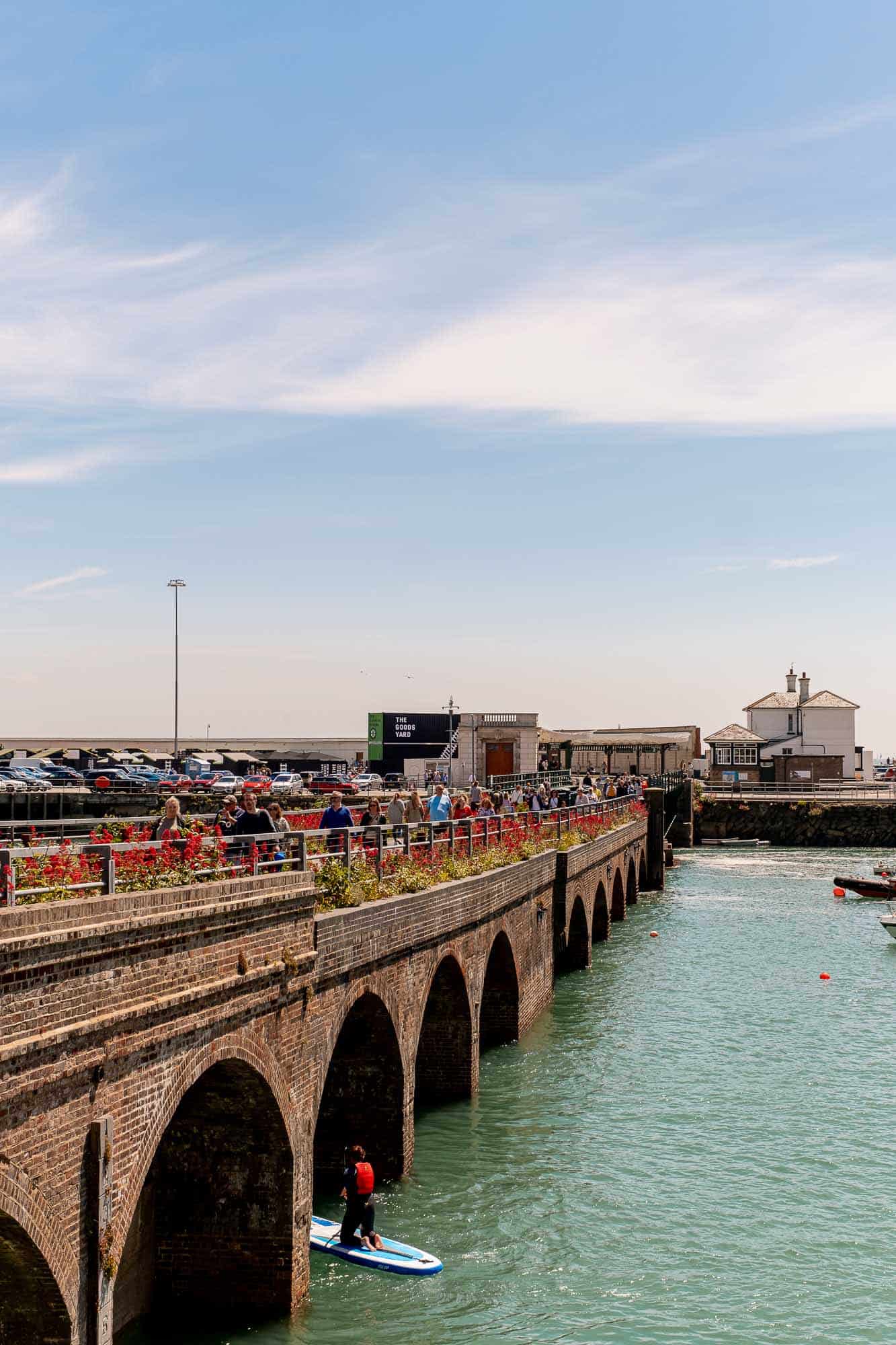
Image Quality
What really sets the Fujifilm XF 16-55mm F2.8 R LM WR apart is its excellent image quality. The optical design incorporates both extra-low dispersion and aspherical elements to reduce distortion and colour fringing, resulting in sharpness and accurate colour rendering throughout the zoom range.
- Type: Standard Zoom lens
- Best for: Travel photography
- Focal length: 16 – 55mm
- Aperture: f/2.8 – f/22
- Image stabilisation: No
- Built-in autofocus: Yes
- Weather sealing: Yes
FUJIFILM XF 10-24mm f/4 R OIS WR Lens – Best Fuji Lens For Landscape

- Excellent built quality
- Optical Image Stabilisation
- Poor Manual Focus
- Poor ring design
- More expensive compared to other options in Fujifilm’s XF lens lineup.
Check Price Here
The Fujifilm XF 10-24mm lens is a versatile zoom that can lend itself to a wide range of different subjects, particularly travel and landscape photography.
This XF10-24mm lens is weather-resistant, so you can shoot in adverse weather conditions. It also includes a more advanced Optical Image Stabilisation (OIS) system to help avoid unwanted camera blur in your images.
Design changes include an auto-position lock on the aperture ring to help prevent accidental aperture changes, and the body also weighs less at just 385g, so you can travel lightly.
Wide-angle 15-36mm equivalent focal length The XF10-24mmF4 R OIS WR offers a 35mm equivalent focal length of 15-36mm and a constant aperture of F4 regardless of where it is in the zoom range.
This Fujifilm lens has improved optical image stabilisation (OIS). A new and improved gyro sensor inside the XF10-24mmF4 creates an additional stop of stabilisation, bringing overall OIS performance to 3.5 stops.
This can be further extended to 6.5 stops when paired with the in-body image stabilisation (IBIS) in some X Series cameras.
The result is a whole new world of tripod-free opportunity, even after the sun goes down Advanced internal focusing system by utilising an advanced internal focusing system, the XF10-24mmF4 is capable of precision autofocus that is not just extremely fast but near-silent.
Weather-resistance against dust, moisture, and cold down to -10° In addition to its tough, metal external casing, the XF10-24mm F4 Fujifilm lens has been equipped with weather resistance that helps protect it from dust and moisture.
The lens can also operate in temperatures as low as -10°C, making it the ideal companion when battling the elements to get the perfect shot, from wild Arctic expanses to arid desert dunes.
As for image quality, this lens offers excellent sharpness throughout its zoom range and produces minimal distortion.
The lens handles chromatic aberration well, producing clear and vibrant images with true-to-life colours. Additionally, the aperture at f/4 allows for a nice depth of field to create a beautiful background blur (bokeh).
- Type: Wide-Angle Zoom
- Best for: Landscape photography
- Focal length: 10 – 24mm
- Aperture: f/4 – f/22
- Image stabilisation: Yes

Fujifilm XF 16-80mm f4 R OIS WR Lens – Most Versatile Lens

- Versatile Focal Length
- Lightweight and compact design
- Affordable
- Autofocus hunting in low light conditions
- Maximum aperture of f/4 not suitable for night
The Fujifilm 16-80mm lens is a great choice for anyone looking for a versatile and compact zoom lens. The Fuji XF16-80mm F4 R OIS WR lens consists of 16 elements in 12 groups, and one aspherical element is specially designed to minimise field curvature and spherical aberration.
This compact and versatile lens for any shooting situation also covers an effective focal range from 24mm to 120mm (wide angle lens to mid-telephoto ) and weighs just 15. 5 oz. (440 g).
The Fujifilm 16-80mm lens also features 6.0 stops of optical image stabilisation to shoot in a wide variety of situations. The autofocus on this lens is also quick and near-silent, making it ideal for street photography.
The Fujifilm 16-80mm lens stands out as one of the best zoom lenses in Fujifilm’s lineup thanks to its compact size, wide focal range, and impressive image stabilisation capabilities.
This lens also has weather sealing in ten places along the barrel, making it a durable and reliable option for any type of shooting situation.
Overall, the image quality from the Fujifilm 16-80mm lens is sharp and clear thanks to its use of aspherical elements and optical image stabilisation. The autofocus is also quick and quiet, making it easy to capture fast-moving subjects.
- Type: Standard Zoom
Fujifilm 18-55mm f/2.8 – 4 – Best Kit Travel Lens

- Solid build quality
- Brighter aperture than most kit lenses
- Sharp images
- Compact and lightweight
- Image Stabilisation
- Not weather sealed
- No number markings on the aperture ring
My all-around top pick for the best Fujifilm travel lens is the Fujifilm 18-55 f/2.8 . It’s a Fuji kit lens (but this is not your average kit lens) that’s compact and versatile, with a much brighter aperture than you’d usually find on a kit lens.
Weighing in at 308g, this lens is reasonably lightweight for a zoom lens. It’s compact, with an impressive build quality that feels robust. The zoom and focus rings are wonderfully smooth and heavy.
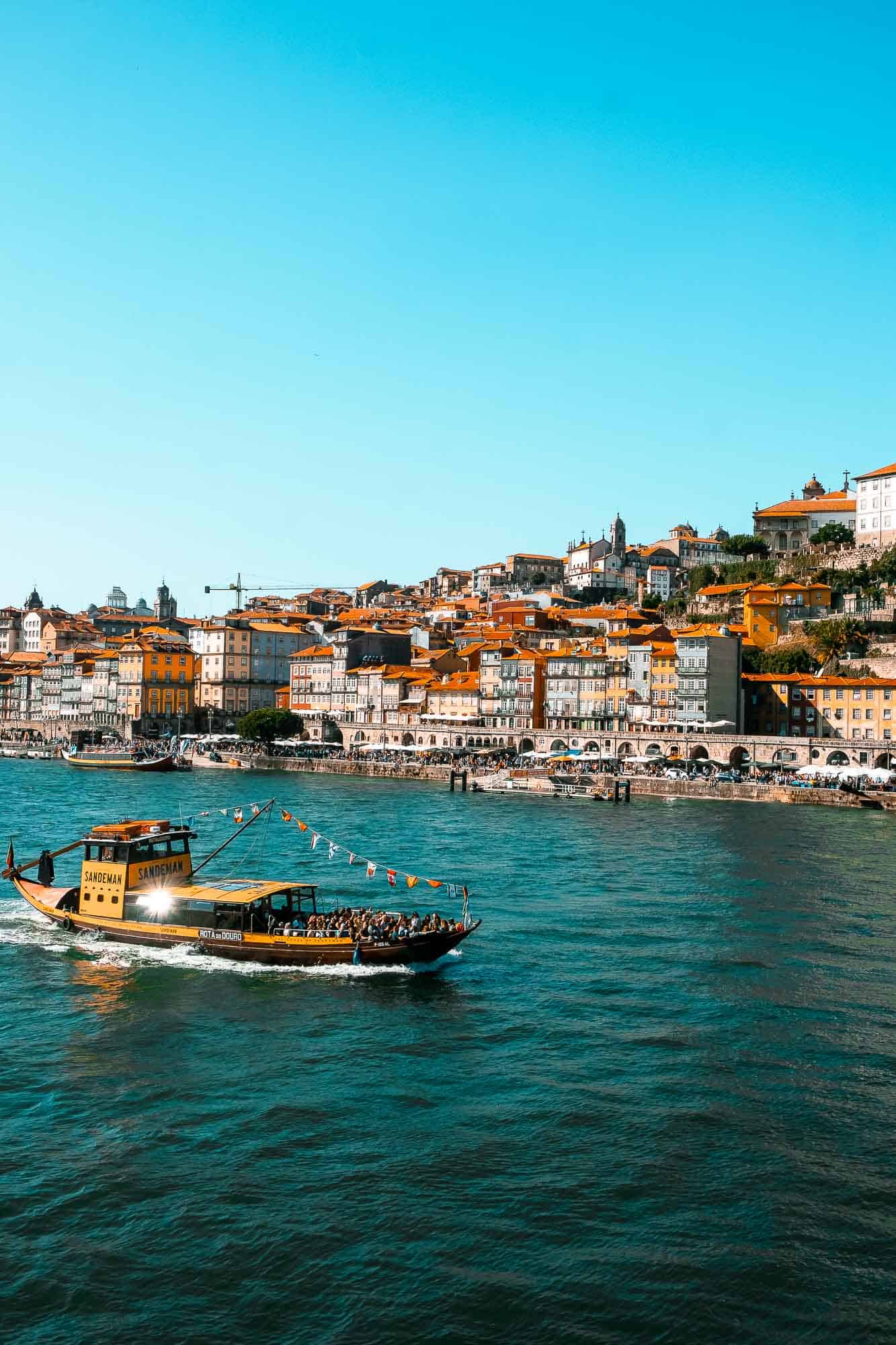
While it’s expensive for a kit lens, this is really affordable for its performance, at around £499. It’s constructed with 14 elements in 10 groups. This includes 1 extra-low dispersion element and 3 aspherical elements .
The lack of weather sealing won’t be a big issue for most casual photographers, but it’s worth considering. Not being able to shoot in strong winds and rain can limit opportunities.
This lens offers impressive sharpness for a relatively affordable zoom lens. Though sharpness can be lost a little around the edges in certain situations.
The relatively wide aperture allows for more out-of-focus backgrounds than most kit lenses. And the bokeh is pretty smooth.
As a fairly standard zoom lens, it can handle a variety of photography styles, from landscape shots to portraits. All in all, it’s a great all-rounder that offers impressive versatility and excellent performance for the price tag.
This lens is also great if you want to dabble in the video has optical image stabilisation and covers a focal length range from 27mm*1 wide-angle to 84mm*1 telephoto (equivalent focal length on full-frame).
Already made up your mind? Get this lens here
- Best for: All-round use for beginners
- Focal length: 18 – 55mm
- Weather sealing: No
Best Fuji Prime Lenses | Fujifilm X Mount Fuji Lens Review
Best Fujifilm’s prime lenses for travel are the: I review each of these in more depth in the following section.
Fujifilm 23mm f/2 WR – Best Lens For Street Photogrpahy
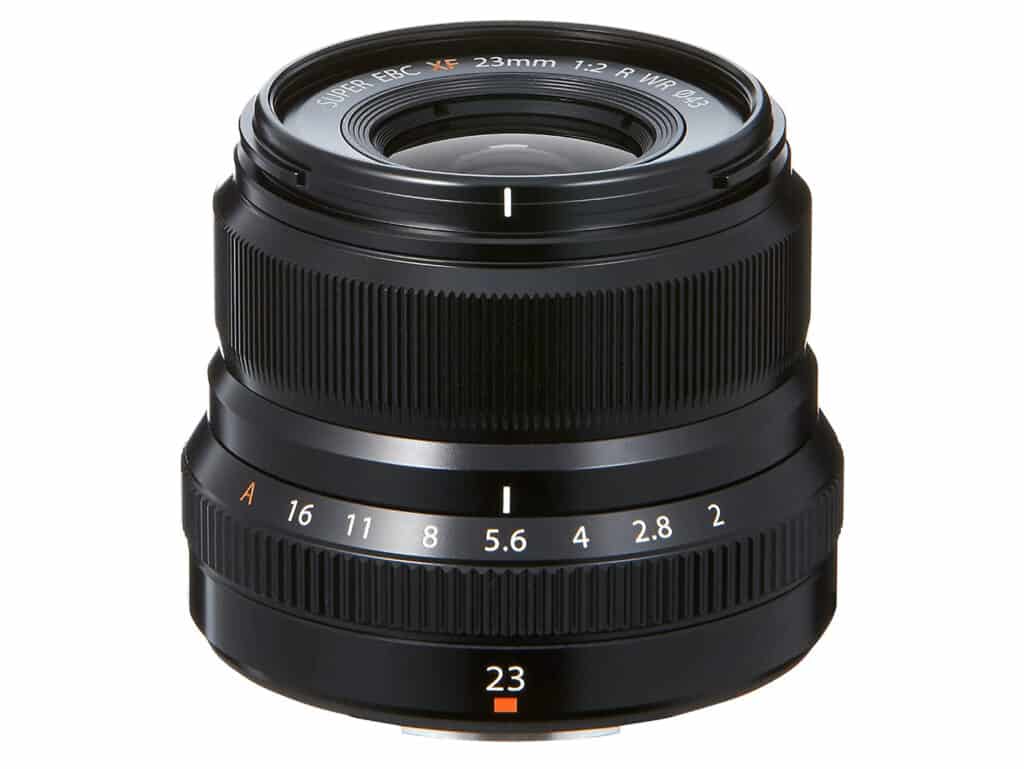
- Fairly large maximum aperture
- Quick, silent autofocus
- Weather and dust resistant
- No image stabilisation
- Not ideal for close-up shots
- Bokeh could be better
- Image sharpness fades at the corners
Fujifilm’s 23mm f/2 WR is a high-quality, relatively affordable lens that offers great value for money. It’s a Fuji wide-angle lens best suited to street and travel photography. This is one of the best Fuji prime lenses for travel.
At just 181g, this lens is relatively small and light when compared to other Fujinon lenses, which are ideal for on-the-go travel photography.
Considering this small stature, the 23mm f/2 is particularly comfortable with smaller cameras. With a build that is simple, sturdy, and fuss-free.
The included lens hood and cap are plastic rather than metal, but that’s hardly a deal-breaker.

It’s also weather and dust-resistant, unlike the other lenses on this list. So you can get good use out of it even when the sun stops shining or you head out on a more rugged adventure.
The autofocus is fast and silent, both big wins in travel photography. A downfall here, though, is that there’s no switch on the lens for manual focus, so you have to change to manual docs on your camera if you wish to do so.
This lens is available for a relatively affordable price. Which, paired with its high quality, makes it a great value buy. It costs around £429 and is more affordable than many other Fuji lenses. Just bear in mind that it doesn’t have onboard image stabilisation.
The lens configuration includes 10 elements in 6 groups, with 2 aspherical elements. You can read my in-depth review of the Fujifilm 23mm 2f lens .
The image’s sharpness is brilliant in the centre, but it fades slightly toward the corners. This may be a slight issue for some serious photographers, but it’s unlikely to affect most travellers.
You’ll find good sharpness if you play around with the f-stop (shooting between f5 – f8). And the lens offers simple, good-looking bokeh.

Considering its short focal length, this lens is best for landscape, travel and street photography. It’s good at capturing wide scenes rather than close-up subjects and full-body-person shots.
So, I wouldn’t recommend it if you enjoy taking portraits, as the wide-angle lenses tend to distort facial features.
- Type: Wide-Angle Prime
- Best for: Street photography
- Focal length: 23mm
- Aperture: f/2 – f/16
Fujifilm XF27mm F2.8 R WR lens – Best Everyday Use Lens

- Fast autofocus
- Wide F2.8 aperture
- Affordable price
- Produces sharp images with beautiful bokeh
- Focusing not super fast
- Not great close focus
The FUJINON XF27mmF2.8 R WR is a compact, ‘pancake-style’ lens. Weighing just 84g, it is designed to offer maximum portability without any loss of image quality.
Its natural field of view closely resembles what the human eye sees, making it great for everyday use.
However, it comes into its own when creating travel and documentary images or everyday use that exude the true essence of a location or area.
The 41mm equivalent focal length of the XF 27mm pancake lens closely resembles the field of view seen by the human eye, making it suitable for various subjects, such as portraits and nature photography.
This lens also offers weather resistance, so the elements can’t hold you back, and it features an aperture ring to change the settings easier.
The lens has an aperture ring to change the settings easier and weather-resistant construction.
As one of Fujifilm’s premium prime lenses, the XF 27mm offers excellent image quality in a compact design. Its versatility and portability make it a great choice for travel photographers.
This lens is weather-resistant and capable of operating in temperatures as low as 14°F (-10°C), making it the perfect companion for shooting in all conditions.
Regarding image quality, the Fujifilm XF27mm F2.8 R WR does not disappoint. The colours are vibrant and true to life, with excellent sharpness in both the centre and corners of the frame.
Its advanced optical design minimises aberrations and distortions for a high level of image quality.
This lens also produces beautiful bokeh, making it an excellent choice for portraits or close-up shots. Overall, this lens delivers professional-level results at a fraction of the cost.
- Type: Standard Prime
- Best for: Everyday use
- Focal length: 27mm
- Aperture: f/2.8
Fujifilm 35mm f/1.4

- Very wide maximum aperture
- Brilliant image quality
- Top-notch build quality
- Lightweight and compact
- Versatile focal length
- Great for low light photography
- Not weather resistant
- The aperture ring can feel a little loose
Fujifilm’s 35mm f/1.4 offers outstanding image and build quality in a compact package. And all for a very reasonable price.
It’s a perfect everyday lens, ideal for various photography styles. I think it’s one of the best travel lenses on the market.
The Fuji 35mm f/1.4 is an all-metal barrel with an exceptionally high build quality. The mount and hood are both metal as well. And the lens is light and compact, weighing only 187g.
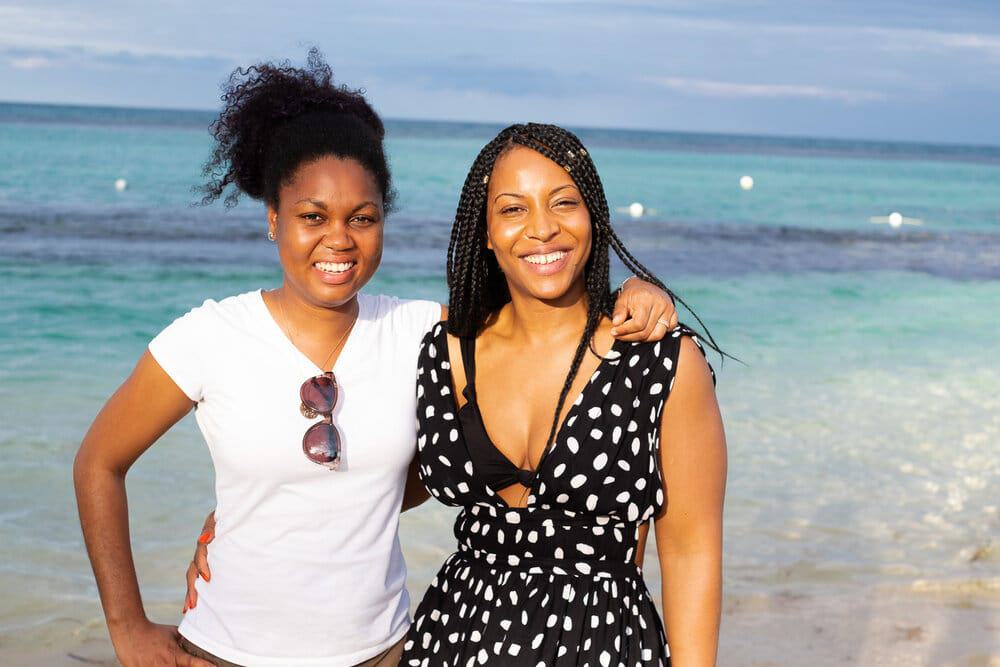
You’ll find a focus ring and an aperture ring on the barrel, both of which are pretty smooth and precise. Although the aperture ring can sometimes feel like it doesn’t have quite enough resistance.
The autofocus is quick and highly accurate. Though it does make a bit of a ‘chattering’ sound if you listen closely.
It’s constructed with 8 elements in 6 groups, including 1 aspherical element. You can read my in-depth review of the Fujifilm 35mm f1.4 lens .
At £499, it’s a little pricier than the previous option. But the wide aperture, brilliant image quality, and greater versatility make it worth spending on.
The sharpness of this lens is hard to fault. Images are sharp at the centre, with sharpness loss in the corners at larger apertures. But it’s a particularly sharp lens on the whole.
Bokeh is smooth and gorgeous with slightly duller light sources. But it isn’t quite as pleasing if the light source is too bright.
This lens is a great all-rounder with a 35mm focal length (which translates to about 53mm on Fuji’s APS-C sensors). It’s a jack of all trades and a master of some, including street photography and portraits.
- Type: Prime lens
- Best for: General use / Street photography
- Focal length: 35mm
- Aperture: f/1.4 – f/16
Fujifilm 56mm f/1.2 – Best Lens For Portraits

- Outstanding image quality
- Sturdy build
- Stunning bokeh
- Quite expensive
- No onboard stabilisation
- Focus ring could have more tension
The Fuji XF 56mm f/1.2 is a top-quality portrait and shallow depth of field lens. With its extremely wide aperture (f/1.2), this thing can capture stunning images with creamy, out-of-focus backgrounds.
At 405g, this lens is a bit heavier and bulkier than the other lenses on this list. But it’s still by no means excessive in size and will be a comfortable travel companion.
There is a focus ring and an aperture ring with tactile clicks on the barrel. In my opinion, the aperture ring could do with a bit more resistance.
But the focus ring is very comfortable to use. It boasts a top-quality, almost entirely metal constriction and feels solid in the hand.
Just like the 35mm lens above, this model’s autofocus motor makes a bit of a whirring noise when in use. But it isn’t too loud. The lens is constructed with 11 elements in 8 groups – 1 aspherical and 2 extra-low dispersion.

It is the priciest of the bunch discussed in this post, at around £849. But you’re paying for some seriously high-quality glass.
The sharpness is exceptional in the centre and around the edges and corners. It’s even sharp when wide open. And with its ultra-fast aperture, the bokeh is breathtakingly creamy.
The autofocus system works pretty quickly and accurately, even in low-light conditions. There is a nice focus ring on the barrel; some say the lens isn’t terribly responsive in manual focus mode.
But this is not the case for me, this lens requires a lot more knowledge of photography, but it is a beauty to show.

With its extremely wide maximum aperture and 56mm focal length (About 85mm full-frame equivalent), this lens is ideal for portrait photography. But it works brilliantly for any shots where you want the subject to stand out against the background.
- Best for: Portraits / shallow depth of field (I also use this for travel)
- Focal length: 56mm
- Aperture: f/1.2 – f/16
Fujifilm XF 16mm f1.4 R WR Lens – Best Lens For Architecture

- Wide field of view
- Fast F1.4 aperture
- Weather-resistant construction
- Sharp image quality with Nano GI coating
- Fast focusing
- Expensive compared to other lenses
- Some chromatic aberration at wide apertures
- Some vignetting at wide apertures
The Fujifilm 16mm lens is a wide-angle prime lens that is weather-resistant and offers a fast maximum aperture of F1.4.
This lens is perfect for capturing dramatic landscapes and beautiful architecture, while it’s Nano GI coating ensures that images are sharp with improved definition.
The focusing ring on the XF16mmF1.4 R WR slides backward and forwards to enable users to quickly switch between manual and autofocus, and the lens also features a total of nine seals that prevent water and dust from getting into the body.
One of the standout features of the Fujifilm 16mm lens is its wide field of view, allowing for more versatility in capturing a scene.
The fast F1.4 aperture also allows for blurrier backgrounds and the ability to shoot in low-lighting conditions without a camera shake. Additionally, this lens has a great close-up capability, with a minimum focus distance of 15cm.
The weather-resistant design allows photographers to continue shooting even in damp or sub-zero conditions, making it one of Fujifilm’s best prime lenses for travel photography.
The Fujifilm 16mm lens is a wide-angle lens that offers excellent image quality and features weather-resistant construction for shooting in difficult conditions.
This lens is perfect for capturing dramatic landscapes and beautiful architecture, while its fast maximum aperture of F1.4 allows for blurrier backgrounds and the ability to shoot in low lighting conditions without a camera shake.
What to Look for in a Travel Lens
Before we get into the recommendations and reviews, I’d like to offer a quick breakdown of what you should look for in the best Fuji travel lenses. The key elements are portability, versatility, quality, and price.
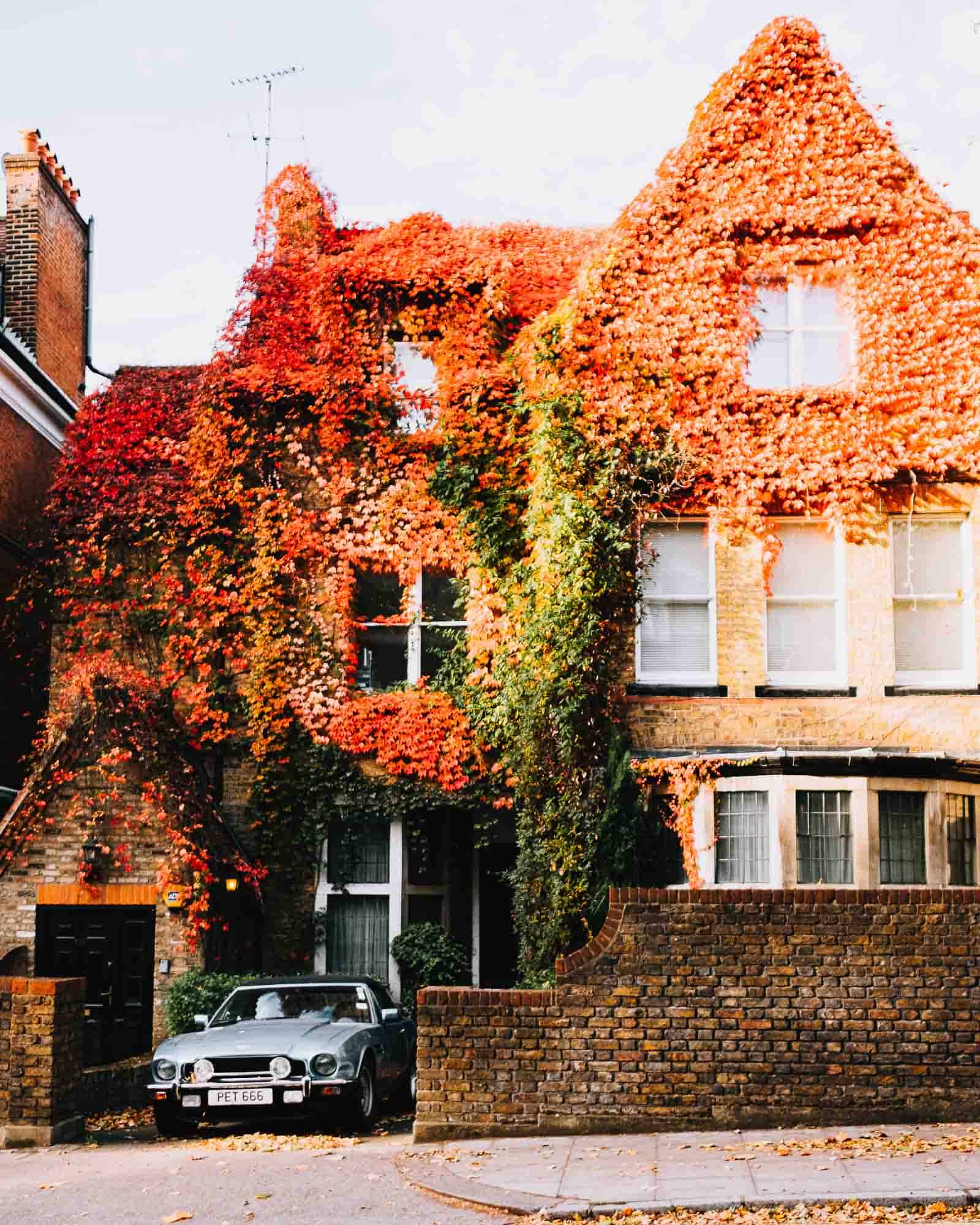
While you won’t be able to find a lens that ticks all of these boxes, they’re all important considerations, and you’ll be able to decide which are most important for your purposes. So let’s get into it.
Portability
This one’s a bit of a no-brainer. You don’t want to be lugging around bulky gear cases or enormous telephoto lenses when you’re on the move.
Doing so will weigh you down and can distract you from your travel experiences. So, it’s best to pack light when it comes to camera travel gear .
Having one good versatile lens, or a couple more specialised lenses, is ideal. I take a less-is-more approach, and you’ll thank me late.
Versatility
Travel photography often means being thrown into a variety of situations and being able to capture moments on the fly as they arise.
So you’ll want to opt for lenses that are versatile enough to perform well in this diverse range of situations.
Due to their variable focal length, zoom lenses are great for versatility. But an excellent prime lens can make the ultimate addition to your travel kit, particularly if you already have a zoom kit lens.
Obviously, the quality of the images you take will be an essential factor. And a lens is often one of the most important elements in dictating image quality.
One of the key things to look out for is the aperture (this is what controls the amount of light passing through the lens).
Aperture is signified by the ‘f’ number on a lens – the lower the number, the larger the maximum aperture. Larger aperture lenses allow more light in, meaning better low-light performance.
They also offer great flexibility and are capable of taking more professional-looking images (with out-of-focus backgrounds and foregrounds and stunning bokeh ).
Of course, there are other elements that dictate quality, and I’ll get into each of them in the reviews.
All I can say about the price is that you should spend what you’re comfortable spending and focus on getting great value for money. The lenses I’ve reviewed here all offer a good bang for your buck.
Now I’ll briefly discuss the different lens types and why each may be suitable for your travel needs. The two main categories are prime lenses and zoom lenses. Here’s a detailed breakdown of each one.
Why Choose a Fuji Zoom Lens for Travel
Zoom lenses have a variable focal length which, as the name suggests, allows you to zoom. A zoom ring on the lens is used to adjust the focal length, which changes the field of view. So you can switch between wide-angle and tighter shots.
All this means that zoom lenses are more versatile than their prime cousins. They can be used for a wider range of purposes and capture subjects at various distances from the camera.

Professionals tend to favour prime lenses over zoom lenses, but that’s not to say that zoom lenses are necessary for inferior quality.
In fact, some incredibly impressive zoom lenses on the market rival even the finest prime lenses. They’ve been gaining popularity as their quality standards improve over time, and their convenience continues to impress.
So is a zoom lens the right travel photography lens for you? Well, if you like to pack light and want versatility in your photography, then a zoom lens will treat you well.
And if you’re not a professional photographer, the quality is very unlikely to be an issue, even with a relatively affordable zoom lens.
Zoom lenses tend to be the more practical option for most travellers. Their diverse functionality, convenience, and ever-improving quality make them ideal for most purposes.
But prime lenses certainly deserve consideration for their exceptional quality. I’ll let you decide for yourself.
Why Choose a prime lens for Travel
Prime lenses are lenses with a single, fixed focal length. Meaning they can’t zoom in or out. But they’ve been the firm favourite of professional photographers since the beginning.
The main draw of prime lenses is the quality. While zoom lenses have been improving in recent years, prime lenses are considered for their high quality and ability to produce images of a professional standard.
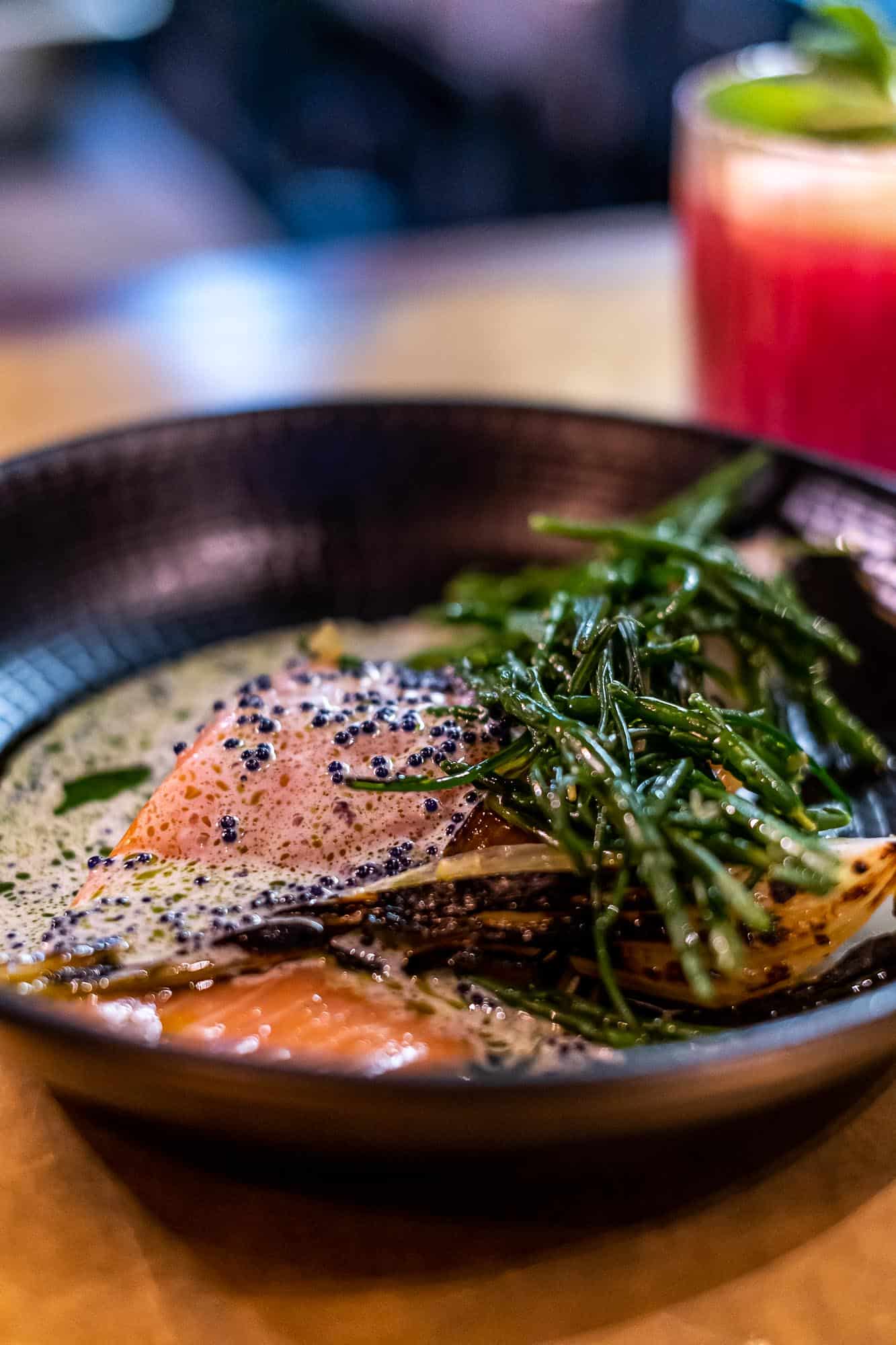
Another attractive feature of prime lenses is their relatively affordable price. It sounds counter-intuitive, I know.
But prime lenses have fewer mechanical structures and moving parts, so the cost can be kept relatively low. They also tend to be lighter and smaller than most zoom lenses for the same reason.
However, seeing as they are not versatile in terms of focal length, most photographers will have multiple prime lenses.
Each with a different focal length and serves a different function. This can mean carrying around a case full of prime lenses rather than a single zoom lens. And it means a higher cost and more weight for comparable versatility.
The last advantage of prime lenses is that they’re able to offer much wider apertures than most zoom lenses.
So are prime lenses right for travel? It’s a tough question. But at the end of the day, it depends on the type of photography you’ll be doing and how light you want to pack.
If you’re sticking to one style of photography, such as portraiture or street photography, you may only need one focal length to play with.
In this case, one quality prime lens could do the job well. But if you want to dabble in a diverse range of photography styles, carrying a case of prime lenses might be inconvenient and bulky.
You’re likely better off opting for a single, high-quality zoom lens that can be used for various styles.
If you don’t mind carrying multiple lenses and have the budget for them, having a couple of prime lenses will serve you well.
Fujifilm as a Brand
Now for a quick rundown of Fujifilm as a brand and why their cameras are great for travel. Seeing as you’re reading this post, it’s likely that you already have a Fuji camera. But for those still considering buying one, this section may come in handy.
Fujifilm has been around since 1934 but has upped their game in recent years with an influx of high-end, high-quality mirrorless cameras taking on the larger full-frame cameras.
While they were initially less performance-focused and more concerned with the design, Fujifilm cameras and lenses now rival the likes of Nikon, Sony, and Canon. They offer impressively high quality and are often on the front lines of innovation.
👉 READ MY GUIDE ON THE BEST FUJI CAMERA FOR TRAVEL
Fujifilm is also one of the strongest brands for mirrorless cameras . In fact, they’ve dropped their SLR range entirely in favour of focusing all their attention on the highest quality mirrorless options and fangirls worldwide like me rejoice.
Mirrorless cameras do away with the bulky mirror mechanisms used in DSLRs without forgoing image quality. This means that they’re lighter and more compact than DSLR cameras , and therefore better for travelling.
Best Fuji Lens for Travel: FAQs
When people ask me about the Best lens for Fujifilm when it comes to travel, here are the answers to some of the most common questions I get!
Do you take a telephoto lens when traveling?
When travelling, many photographers opt to bring along a telephoto lens. These lenses allow you to capture close-up shots of your subject without getting too close, which can be ideal in situations where you don’t want to disturb your subject or be obtrusive.
This is especially useful when photographing wildlife or other shy subjects. Telephoto lenses also compress the foreground and background of your shot, creating a more dramatic effect in your photos.
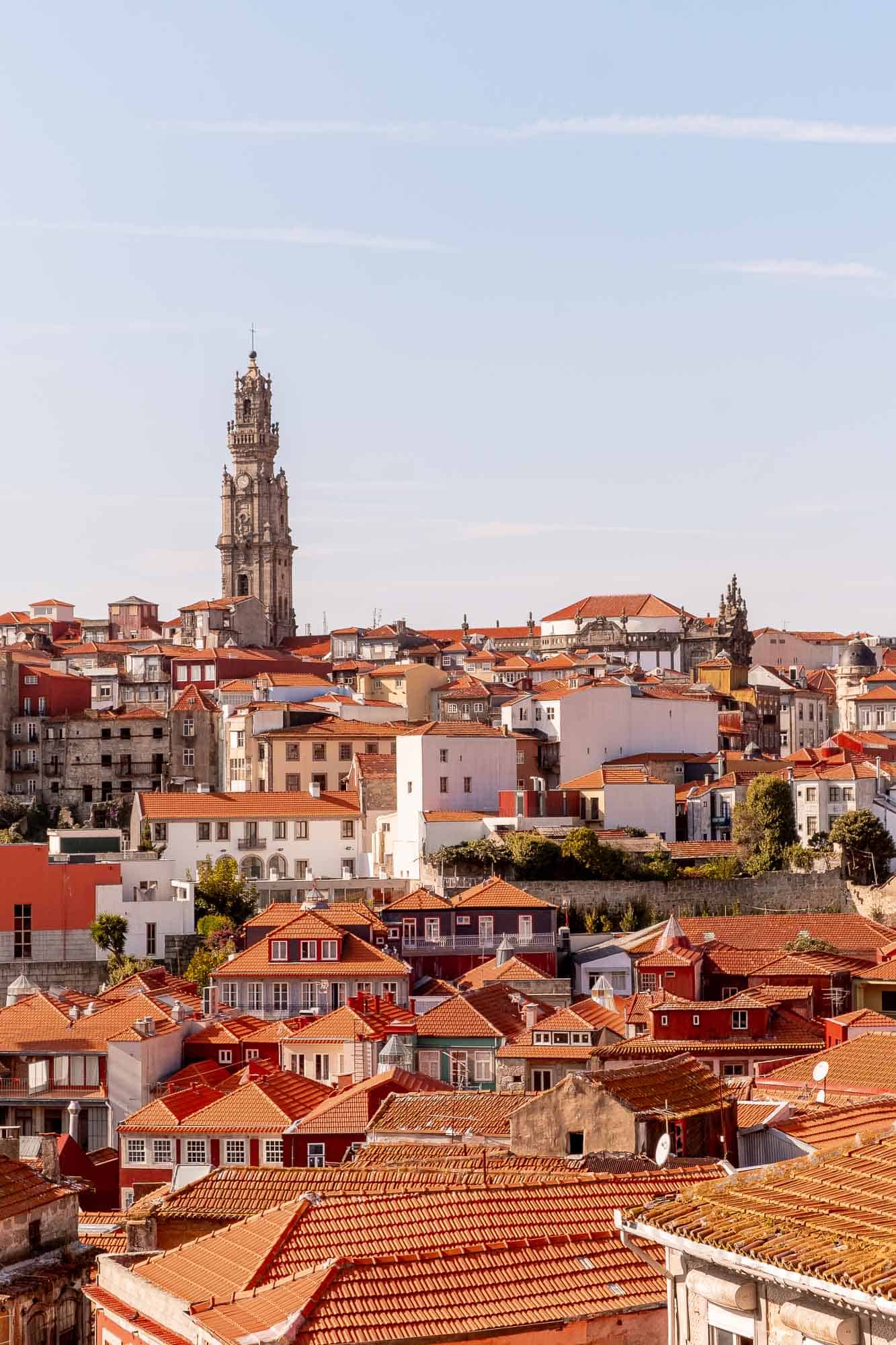
And, of course, they allow you to capture more of the scene in front of you. However, telephoto lenses can be bulky and heavy, so it’s important to consider whether the added weight is worth it for the types of photos you plan to take on your trip.
Which Fuji lens is the sharpest?
When it comes to sharpness, there is no definitive answer as to which Fuji lens is the sharpest. This is because sharpness is relative, and what one photographer considers sharp may not be as sharp as another photographer’s standards.
That said, a few lenses are generally considered to be among the sharpest available for Fuji cameras. These include the Fujinon XF 56mm f/1.2 R, Fujinon XF 16mm f/1.4 R WR, and the Fujinon XF 16-55mm f/2.8 R LM WR. All three of these lenses are designed for high-resolution cameras and offer excellent optics and construction.
As a result, they are all capable of producing exceptionally sharp images. So, if you’re looking for a lens that can give you the best possible results in terms of sharpness, then any of these three would be a great option.
Best Fuji lens for family travel?
When travelling with family, you want a Fuji lens that can capture both wide landscapes and intimate moments. The Fujinon XF16-55mm f/2.8 R LM WR OIS is a great all-purpose lens that offers a versatile zoom range, is weather-resistant, and has image stabilisation for clear photos and videos. Making it ideal for capturing both sweeping landscapes and intimate close-ups.
If you’re looking for something with a little more reach, the Fujinon XF55-200mm f/3.5-4.8 R LM OIS is an excellent option for capturing distant subjects without sacrificing quality.
Whichever Fuji lens you choose, you’ll surely capture beautiful memories of your family travels.
Fujifilm X-T4 best lenses for video
If you’re a Fujifilm photographer looking to get the best lenses for video, the Fujifilm X-T4 is a great option. Its flip-out screen and 4K 60p recording make it an excellent choice for anyone looking to get the most out of their video footage.
But what are the best lenses for Fujifilm X-T4? Here are our top picks of the best Fuji lenses:
- Fujifilm XF 16-55mm f/2.8 R LM WR Lens : This all-purpose zoom lens is great for everything from landscapes to portraits. With a fast maximum aperture of f/2.8, it’s perfect for low-light shooting and video recording.
- Fujifilm XF 50-140mm f/2.8 R LM OIS WR Lens : This telephoto zoom lens is perfect for capturing detailed close-ups and long-distance shots. With optical image stabilisation and a fast maximum aperture of f/2.8, it’s ideal for video recording and low-light shooting.
- F ujifilm XF 18-55mm f/2.8-4 R LM OIS Lens : This standard zoom is a great all-purpose option for photographers and videographers alike. With optical image stabilisation and a fast maximum aperture of f/2.8, it’s arguably the best Fuji lens for low light shooting or capturing smooth video footage.
- Fujifilm XF 23mm f/1.4 R Lens : This fast prime lens is perfect for low-light shooting and shallow depth-of-field effects. With a maximum aperture of f/1.4, it’s one of the fastest wide-angle lenses available for the Fujifilm X system.
- Fujifilm XF 35mm f/1.4 R Lens : Another fast prime lens, the Fujifilm XF 35mm f/1.4 R, is perfect for general-purpose photography and videography alike. With a maximum aperture of f/1.4, it can capture stunning images and videos in low light or with shallower depth-of-field effects than slower lenses can achieve. These are some of the best Fuji camera lenses for video.
Best Fujifilm Lens for Travel: Wrapping Up
So, there you have it – the best Fujifilm lenses for travel. I made sure to review a range of options here that will cover most travel photographers’ needs.
I’m sure one (or more) of these fantastic lenses will be right for you, whether you’re looking for the best budget Fujifilm lenses, the best lenses for Fuji XT2, or just the overall best travel photography lens offered by Fujifilm.
I have all 9 lenses on this list (as I said, I’m a Fuji fangirl), and I’ve even reviewed them on my Youtube channel.
All of these Fuji lenses for travel are a great step up from most standard kit lenses, and they’re sure to help you push your photography to the next level. So, grab your new Fuji lens, get out there, and go take some incredible pictures.
Read More Fuji Lenses Review
📸 fuji 23mm vs 35mm lens.
Fuji 23mm vs. 35mm Lens Showdown : Which One Deserves a Spot in Your Camera Bag? We delve into the strengths of each lens, helping you decide the perfect match for your photography needs!
📸 Best Fuji Prime Lens For Travel
Unlocking the Magic of Fuji’s Prime Lenses : Your Guide to the Best Picks and How They Transform Your Photography. Discover the ideal Fuji prime lens that aligns with your style and elevates your images.
📸 Best Fujifilm Lens for Street Photography
Mastering the Urban Canvas: The Best Fuji Lens for Street Photography and Why It’s a Must-Have. Dive into our top picks that can capture the soul of the city with every shot.
📸 9 Best Fuji Lenses for Portraits
The Best Fuji Lenses for Stunning Portraits and Why You Need One. Explore our top picks that can elevate your portrait photography to new heights.
📸 Fuji 16-55mm vs 18-55mm Lens
The Best Fuji Fuji Zoom Lens For Travel Showdown: 16-55mm vs. 18-55mm – Which One Fits Your Photography Journey? We analyze the strengths of each lens, helping you make an informed decision for your photography ventures.

Sharing is caring!
- Pinterest 7
One Comment
- Pingback: Best of Spain Tourism: The Most Visited Famous Monuments in Spain | Traveling in Spain
Leave a Reply Cancel reply
Your email address will not be published. Required fields are marked *
Save my name, email, and website in this browser for the next time I comment.
Sharing is Caring
Help spread the word. You're awesome for doing it!


- Transportation (Chesterfield)
- KM Travel Chesterfield
Chesterfield, United Kingdom
Related places.
- Get directions
- Photos page
QR code, vCard

Activate map
Business hours
Reviews of km travel chesterfield.
- Things to Do
- Restaurants
- Holiday Rentals
- Travel Stories
- Add a Place
- Travel Forum
- Travellers' Choice
- Help Centre
Lovely holiday - KM British & European Coach Holiday
- Europe
- United Kingdom (UK)
- England
- Yorkshire
- South Yorkshire
- Barnsley
- Barnsley - Things to Do
- KM British & European Coach Holiday
Brilliant holiday to Torquay, tinsel & turkey 20 th November to Belgrave Sands hotel. The hotel was... read more
Thanks to all at KM TRAVEL especially our driver courier Matt who made the trip more enjoyable and... read more
Trains Moscow to Elektrostal: Times, Prices and Tickets
- Train Times
- Seasonality
- Accommodations
Moscow to Elektrostal by train
The journey from Moscow to Elektrostal by train is 32.44 mi and takes 2 hr 7 min. There are 71 connections per day, with the first departure at 12:15 AM and the last at 11:46 PM. It is possible to travel from Moscow to Elektrostal by train for as little as or as much as . The best price for this journey is .
Get from Moscow to Elektrostal with Virail
Virail's search tool will provide you with the options you need when you want to go from Moscow to Elektrostal. All you need to do is enter the dates of your planned journey, and let us take care of everything else. Our engine does the hard work, searching through thousands of routes offered by our trusted travel partners to show you options for traveling by train, bus, plane, or carpool. You can filter the results to suit your needs. There are a number of filtering options, including price, one-way or round trip, departure or arrival time, duration of journey, or number of connections. Soon you'll find the best choice for your journey. When you're ready, Virail will transfer you to the provider's website to complete the booking. No matter where you're going, get there with Virail.
How can I find the cheapest train tickets to get from Moscow to Elektrostal?
Prices will vary when you travel from Moscow to Elektrostal. On average, though, you'll pay about for a train ticket. You can find train tickets for prices as low as , but it may require some flexibility with your travel plans. If you're looking for a low price, you may need to prepare to spend more time in transit. You can also often find cheaper train tickets at particular times of day, or on certain days of the week. Of course, ticket prices often change during the year, too; expect to pay more in peak season. For the lowest prices, it's usually best to make your reservation in advance. Be careful, though, as many providers do not offer refunds or exchanges on their cheapest train tickets. Unfortunately, no price was found for your trip from Moscow to Elektrostal. Selecting a new departure or arrival city, without dramatically changing your itinerary could help you find price results. Prices will vary when you travel from Moscow to Elektrostal. On average, though, you'll pay about for a train ticket. If you're looking for a low price, you may need to prepare to spend more time in transit. You can also often find cheaper train tickets at particular times of day, or on certain days of the week. Of course, ticket prices often change during the year, too; expect to pay more in peak season. For the lowest prices, it's usually best to make your reservation in advance. Be careful, though, as many providers do not offer refunds or exchanges on their cheapest train tickets.
How long does it take to get from Moscow to Elektrostal by train?
The journey between Moscow and Elektrostal by train is approximately 32.44 mi. It will take you more or less 2 hr 7 min to complete this journey. This average figure does not take into account any delays that might arise on your route in exceptional circumstances. If you are planning to make a connection or operating on a tight schedule, give yourself plenty of time. The distance between Moscow and Elektrostal is around 32.44 mi. Depending on the exact route and provider you travel with, your journey time can vary. On average, this journey will take approximately 2 hr 7 min. However, the fastest routes between Moscow and Elektrostal take 1 hr 3 min. If a fast journey is a priority for you when traveling, look out for express services that may get you there faster. Some flexibility may be necessary when booking. Often, these services only leave at particular times of day - or even on certain days of the week. You may also find a faster journey by taking an indirect route and connecting in another station along the way.
How many journeys from Moscow to Elektrostal are there every day?
On average, there are 71 daily departures from Moscow to Elektrostal. However, there may be more or less on different days. Providers' timetables can change on certain days of the week or public holidays, and many also vary at particular times of year. Some providers change their schedules during the summer season, for example. At very busy times, there may be up to departures each day. The providers that travel along this route include , and each operates according to their own specific schedules. As a traveler, you may prefer a direct journey, or you may not mind making changes and connections. If you have heavy suitcases, a direct journey could be best; otherwise, you might be able to save money and enjoy more flexibility by making a change along the way. Every day, there are an average of 18 departures from Moscow which travel directly to Elektrostal. There are 53 journeys with one change or more. Unfortunately, no connection was found for your trip from Moscow to Elektrostal. Selecting a new departure or arrival city, without dramatically changing your itinerary could help you find connections.
Book in advance and save
If you're looking for the best deal for your trip from Moscow to Elektrostal, booking train tickets in advance is a great way to save money, but keep in mind that advance tickets are usually not available until 3 months before your travel date.
Stay flexible with your travel time and explore off-peak journeys
Planning your trips around off-peak travel times not only means that you'll be able to avoid the crowds, but can also end up saving you money. Being flexible with your schedule and considering alternative routes or times will significantly impact the amount of money you spend on getting from Moscow to Elektrostal.
Always check special offers
Checking on the latest deals can help save a lot of money, making it worth taking the time to browse and compare prices. So make sure you get the best deal on your ticket and take advantage of special fares for children, youth and seniors as well as discounts for groups.
Unlock the potential of slower trains or connecting trains
If you're planning a trip with some flexible time, why not opt for the scenic route? Taking slower trains or connecting trains that make more stops may save you money on your ticket – definitely worth considering if it fits in your schedule.
Best time to book cheap train tickets from Moscow to Elektrostal
The cheapest Moscow - Elektrostal train tickets can be found for as low as $35.01 if you’re lucky, or $54.00 on average. The most expensive ticket can cost as much as $77.49.
Find the best day to travel to Elektrostal by train
When travelling to Elektrostal by train, if you want to avoid crowds you can check how frequently our customers are travelling in the next 30-days using the graph below. On average, the peak hours to travel are between 6:30am and 9am in the morning, or between 4pm and 7pm in the evening. Please keep this in mind when travelling to your point of departure as you may need some extra time to arrive, particularly in big cities!
Moscow to Elektrostal CO2 Emissions by Train

Anything we can improve?
Frequently Asked Questions
Go local from moscow, trending routes, weekend getaways from moscow, international routes from moscow and nearby areas, other destinations from moscow, other popular routes.
Na Ulitse Yalagina 13B Apartments
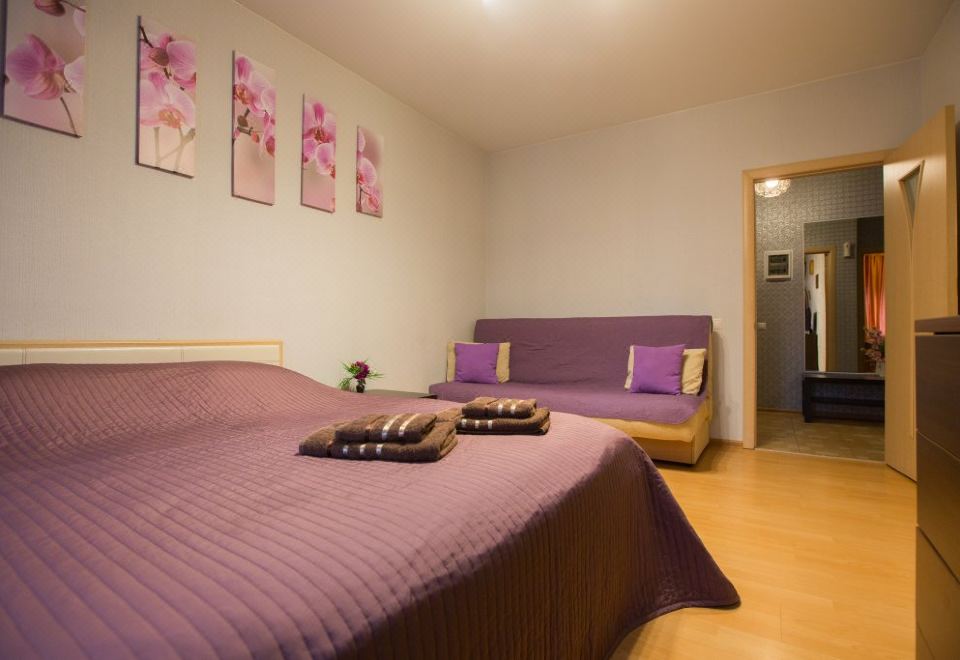
Trending Questions
Property policies, frequently asked questions, how much does it cost to stay at na ulitse yalagina 13b apartments, what are the check-in and check-out times at na ulitse yalagina 13b apartments, does na ulitse yalagina 13b apartments provide airport transfer services, what amenities and services does na ulitse yalagina 13b apartments have, does na ulitse yalagina 13b apartments have a swimming pool, does na ulitse yalagina 13b apartments have fitness amenities, does na ulitse yalagina 13b apartments provide wi-fi, does na ulitse yalagina 13b apartments have non-smoking rooms, does na ulitse yalagina 13b apartments have a restaurant, is parking available at na ulitse yalagina 13b apartments, popular hotels, popular attractions, explore more.
Expedia Rewards is now One Key™
Elektrostal, visit elektrostal, check elektrostal hotel availability, popular places to visit.
- Electrostal History and Art Museum
You can spend time exploring the galleries in Electrostal History and Art Museum in Elektrostal. Take in the museums while you're in the area.
- Cities near Elektrostal

- Places of interest
- Yuri Gagarin Cosmonaut Training Center
- Peter the Great Military Academy
- Central Museum of the Air Forces at Monino
- History of Russian Scarfs and Shawls Museum
- Balashikha Arena
- Balashikha Museum of History and Local Lore
- Bykovo Manor
- Pekhorka Park
- Ramenskii History and Art Museum
- Malenky Puppet Theater
- Drama Theatre BOOM
- Likino Dulevo Museum of Local Lore
- Noginsk Museum and Exhibition Center
- Pavlovsky Posad Museum of Art and History
- Saturn Stadium
- Fairy Tale Children's Model Puppet Theater
- Fifth House Gallery
- Church of Vladimir
- Malakhovka Museum of History and Culture
- Orekhovo Zuevsky City Exhibition Hall
Destinations in May
Destinations in 2024.
Please note prices are based on two persons sharing a twin/double room. Single room supplements may apply, please call check single availability/price.
Comments are closed.
- Destinations
- Hotel Information
- Private hire
- Special offers / Late availability
- Travel Insurance
- Employment Opportunities

NEW CHRISTMAS TOUR 2024 - Bournemouth - Norfolk Royale Hotel - BROCHURE ADDITION . 2024 EUROPEAN HOLIDAYS - Early release - ITALY - Lake Garda / Alassio Click here to download our 2024 Brochure All Our Holidays Include In The Price: Free Door to Door Taxi ( Subject to Area ) ~ Luxury Coach Travel ~ Reserved Coach Seats . Personally Selected ...
www.kmchesterfield.co.uk
KM Travel of Barnsley, South Yorkshire. Request a brochure by: Calling: 01226 245564 email: [email protected] . download: click here to download the 2024 Tour Brochure.
KM Travel is in Chesterfield, KM Travel may offer holiday tours, sightseeing tours, and general city tours in Chesterfield. If you have used KM Travel before be sure to leave your own comment or rating on the city tour or holiday tour that you went on so other poeple wishing to use this company can read fair and honest reviews before the book ...
What people are saying. " HOLIDAY TO BLACKPOOL ". Oct 2023. Thanks to all at KM TRAVEL especially our driver courier Matt who made the trip more enjoyable and a credit to the co... " Lovely place enjoyed it clean need a bit of investment there ". Aug 2022. Stayed at ilfracombe Devon 14 to 20 Aug the coach was lovely our driver Tony was ...
Reviews, contact details and business hours of KM Travel Chesterfield at 27 Stephenson Place, Chesterfield, Derbyshire. Check out nearby places on a map. Write a review. Log in. ... 21:03 Tuesday, 23 April 2024: Business hours. Monday: 9:00 am - 4:30 pm: Tuesday: 9:00 am - 4:30 pm: Wednesday: 9:00 am - 4:30 pm: Thursday: 9:00 am - 4:30 ...
KM Travel of Barnsley, South Yorkshire. Tel: (01226) 245564 [email protected] . Home. Booking Guide Request Brochure Customer Information Contact Us. ... Our 2024 British Coach Holiday Brochure is now available to download and available shortly from our Market Street office in paper form.
5. £339. Nil. Please note prices are based on two persons sharing a twin/double room. Single room supplements may apply, please call check single availability/price. Price Includes: * Luxury Coach Travel * Local Departure Points. * En-suite bedrooms * Excursions. * Half Board Accommodation.
Page List. (Click on the page required to be linked with that page in the brochure) Page 1 - Front cover. Page 2 - Introduction. Page 3 - Contact information. Customer information. Page 4 - How to make a booking. Holiday index January to June. Page 5 - Holiday index June to December.
Our 2024 UK Brochure is OUT NOW! Order yours today. 01246 474747 Opening Times Brochures . Menu (current) Home Holidays Day Trips ... A-Line Travel 15 Soresby Street Chesterfield S40 1JW 01246 474747 [email protected] . A-Line Travel, Company number 13060548
Lovely holiday. Review of KM British & European Coach Holiday. Reviewed 9 December 2023. Just back from a T&T break at Exmouth. The hotel and food were brilliant, and the driver James was the best. However we had a bad start after waiting nearly one and a half hours in cold and rain at Ilkeston for the coach. I know there was traffic problems ...
Geeveetravelchesterfield, Chesterfield. 1,657 likes · 24 talking about this · 29 were here. DOOR TO DOOR COACH HOLIDAYS DAY TRIPS AND PRIVATE HIRE
Thankyou received our brochure in the post , I see you have new for 2024 Kynren weekend , we went last year and its the most amazing show I've seen well worth going recommended to everybody. 22w. Robert Lindley. Can I have a brochure please 9 monsal crescent Barnsley S71 3PY. 15w.
KM Travel of Barnsley, South Yorkshire. Tel: (01226) 245564 [email protected] . Home. Booking Guide Request Brochure Customer Information Contact Us. Skip to content. Request a brochure by: Calling: 01226 245564 . email: [email protected] download: ... Please note prices are based on two persons sharing a twin/double room ...
Central Air Force Museum The Central Air Force Museum, housed at Monino Airfield, 40 km east of Moscow, Russia, is one of the world's largest aviation museums, and the largest for Russian aircraft. 173 aircraft and 127 aircraft engines are on display, and the museum also features collections of weapons, instruments, uniforms (including captured U2 pilot Gary Powers' uniform), other Cold War ...
The journey from Moscow to Elektrostal by train is 32.44 mi and takes 2 hr 7 min. There are 71 connections per day, with the first departure at 12:15 AM and the last at 11:46 PM. It is possible to travel from Moscow to Elektrostal by train for as little as or as much as . The best price for this journey is . Journey Duration.
KM Travel of Barnsley, South Yorkshire. Tel: (01226) 245564 [email protected] . ... we guarantee excellent customer service and affordable prices. ... Winter/Spring 2024. Blackpool 2024 Potters Resorts 2024. Our booking office is located at: 52, ...
2022 Brochure . Page List ... All Our Holidays Include In The Price: Free Door to Door Taxi ( Subject to Area ) ~ Luxury Coach Travel ~ Reserved Coach Seats . Personally Selected Hotels ~ En-suite Bedrooms ~ Free Varied Excursions . Telephone: 01246 -556617 ...
Prices at Na Ulitse Yalagina 13B Apartments are subject to change according to dates, hotel policy, and other factors. To view prices, please search for the dates you wish to stay at the hotel. What are the check-in and check-out times at Na Ulitse Yalagina 13B Apartments? The check-in time is after 14:00 and the check-out time is before 12:00.
Cities near Elektrostal. Places of interest. Pavlovskiy Posad Noginsk. Travel guide resource for your visit to Elektrostal. Discover the best of Elektrostal so you can plan your trip right.
FUJI X WEEKLY
Ultimate fujifilm kit, my fujifilm travel photography kit.
Posted on December 23, 2021 by Ritchie Roesch

Back in March I published My “Ultimate” Fujifilm Travel Kit . In that article I stated, “A good travel kit strikes a comfortable balance between practicality and petiteness.” I really feel that I accomplished that with this kit; however, I wasn’t completely satisfied with the lenses. Specifically, I had too many lenses, some of which didn’t really serve a purpose.
To quickly recap, my “ultimate travel kit” consisted of:
– National Geographic NG2344 Earth Explorer Shoulder Bag – Fujifilm X100V – Fujifilm X-E4 – Fujinon 18mm f/2 – Fujinon 27mm f/2.8 – Fujinon 35mm f/2 – Peargear 10mm f/8 fisheye – 7artisians 50mm f/1.8 – Asahi Pentax-110 50mm f/2.8

So, nine months later, I’ve made some minor modifications. I’ve eliminated the Fujinon 35mm f/2 and the Asahi-Pentax 110 50mm lenses from the kit, although I still own and use them—they just stay home when I travel. The 7artisans 50mm f/1.8 remains for now, although I do hope to replace it with a Fujinon 50mm f/2 at some point, hopefully in the coming year. With the space that’s been freed up from the eliminated lenses, I’ve added a Ricoh GR to the bag, but obviously that’s not a Fujifilm item, so it’s an unofficial tag-along.
I mentioned yesterday that I’m an “Amazon Influencer” now, which means I have a “ Shop ” on their website. I can create, publish, and share “Idea Lists” in my Shop. How this relates to this article is that I created an Idea List for the current iteration of My “Ultimate” Fujifilm Travel Kit. All of the items currently in my kit can now be found in the “ Ultimate Fujifilm Travel Kit Idea List ” in my Shop. This might be helpful to some of you.
As my travel kit evolves, I will continue to periodically share with you what those changes are. Everyone’s wants and needs are different, and so I can only tell you what works for me. In the comments, be sure to let me know what’s in your Fujifilm travel kit, and why it works for you.
My “Ultimate” Fujifilm Travel Kit
Posted on March 29, 2021 by Ritchie Roesch

I recently set out to create an “ultimate” Fujifilm travel kit.
Over the last couple of years, as I’ve collected more and more gear, traveling with my cameras and lenses has become cumbersome, which has lead to frustrations and reduced productivity. More isn’t always better; in fact, less is often more—this is especially true when traveling. I realized that my gear wasn’t nearly as ready for adventure as I was, and I needed to make some series changes to my kit before embarking on my next road trip.
What makes a travel kit bad ? If it’s big and heavy and gets in the way, it’s not good. My travel kit consisted of a backpack camera bag filled with multiple bodies and as many lenses as I could stuff inside. I went to Montana last fall, and in my bag there was an X-T1, X-T30, X100V, and X-M1, plus a handful of lenses, including the Fujinon 100-400mm and Fujinon 90mm, which aren’t small or lightweight. I hardly used any of them, except for the X100V, which I could easily carry with me, and so I did. Because I had it with me, I used it often. The rest of the gear just got in the way—literally, the backpack took up too much space in the car, and it become a point of frustration. I would have been better off just bringing one or two cameras and maybe a few small lenses—gear that might have actually been used.
I was afraid that if I didn’t have a certain camera or lens, I would regret not bringing it, if at some point I thought I might need it. You never know what you’ll need, so it’s better to be prepared, right? What I discovered over the last few trips is that the majority of what I was carrying with me I didn’t use. Or, for some of it, if I did use it, it’s only because I forced myself to use it when it wasn’t really necessary. Having too much gear actually made me want to photograph less, and made me less creative when I did. My best photography most often happened when I had limited gear—perhaps one camera and one lens—and left the rest behind.
What makes a travel kit good ? It should be compact and lightweight, yet versatile. One camera and one lens is often enough, but not always. The X100V is a great travel camera, but sometimes I need something more wide-angle or more telephoto—it’s not always versatile enough, even though it is often my camera of choice. I think two bodies and a limited assortment of lenses in a small bag is good. Small enough to not get in the way. Lightweight. Something that you don’t mind having with you, so you do. A good travel kit strikes a comfortable balance between practicality and petiteness.
I put together what I hoped would be a great kit for travel photography. I was able to put it to the test on a road trip to Arizona—was it actually going to work for me?—and I discovered many good points and a few things that still need to be worked out. Let’s take a close look at this “ultimate” Fujifilm travel kit that I assembled for myself, piece-by-piece.
This post contains affiliate links, and if you make a purchase using my links I’ll be compensated a small amount for it.

It might seem strange to begin with the bag, but in my mind it’s just that important. The camera bag needed to be very small, but it also had to be able to hold everything. Finding one that I felt was just the right size and design turned out to be a challenge, but after much research I stumbled across the National Geographic NG2344 Earth Explorer Shoulder Bag, and for only $40! The dimensions of this bag are roughly 8″ x 7″ x 6″, yet I can fit two cameras and six lenses inside. I was thrilled to learn that the bag fit into the middle storage console of my car, so it is completely out of the way on road trips, yet is easily and quickly accessible.
I subdivided the main compartment into four, using the soft dividers to create “hidden” storage under the cameras, which I use for lenses. The bottom-right holds two Fujinon lenses, and the bottom-left holds three third-party lenses. Two cameras fit on top, just as long as the interchangeable-lens camera has a pancake lens attached. The small front compartment holds charging cords, extra batteries, SD-cards, etc., while the two tiny top pockets (which are probably more for looks than anything) hold lens-wipes. While everything is packed in, I don’t feel like it’s overstuffed—there actually is a little room for more, should I need it.
One thing that I don’t like about this bag is that the shoulder strap is permanently attached. I might modify it at some point to make the strap removable, as I think that would improve it. Otherwise, the bag seems pretty darn good for the travel photographer.
National Geographic Earth Explorer Bag Amazon B&H

I already owned a Fujifilm X100V, and that camera was going to be in this kit, no doubt about it. The other camera was a question mark for me. It needed to be small yet an interchangeable-lens model. I thought that my X-T30 might be too big, so maybe the X-E3, but it has the older sensor. I really wasn’t sure which camera was going to be the right one. Then Fujifilm announced the X-E4, and I really hoped that it would be the correct camera for this kit, so I immediately preordered it. After several weeks of waiting, and just a couple of days before my Arizona trip, it arrived at my doorstep. And it fit perfectly into the camera bag.
Fujifilm X100V

The Fujifilm X100V , which I’ve had for about 10 months, was a birthday gift from my wife. It’s such a great camera and I absolutely love to shoot with it. The X100V has a permanently attached 23mm lens, which is 35mm full-frame equivalent—a very useful focal-length. The compactness of it makes it especially great for travel.
There are some X100V features that are unique in my bag. It’s weather-sealed, has a nearly silent mechanical leaf shutter, built-in high-speed-synch fill-flash, optical viewfinder, and built-in neutral-density filter. I could photograph with this camera 90% of the time and be very happy, but the X100V isn’t always the right choice. It has strengths, but it also has weaknesses that limit its versatility.
If I could only have one camera, it would be the X100V; however, I believe that this camera demands a partner. If you have this camera, you also need an interchangeable-lens option to accompany it. That’s why I have two cameras in my kit, even though the X100V is oftentimes all that I need.
Fujifilm X100V Black Amazon B&H Fujifilm X100V Silver Amazon B&H
Below are a few pictures that I captured with my Fujifilm X100V on the Arizona trip.

Fujifilm X-E4

The Fujifilm X-E4 is the smallest interchangeable-lens camera with an electronic viewfinder offered by Fujifilm. The compact size of the X-E4 is an important aspect of this travel kit. I have an X-T30, which is a small camera that’s a little bigger than the X-E4, and it does fit into the camera bag, but barely—it’s much more snug than I want it to be. In a pinch it would work, but the X-E4 is a more comfortable fit, and a better choice because of that.
When the X100V isn’t the right tool, the X-E4 fills in nicely. It adds great versatility to the travel kit. I can go more wide-angle or telephoto by changing the lens. It can store one more film simulation recipe than the X100V. It has some new JPEG features that the X100V doesn’t. Even though 90% of the time the X100V is all that I need, I found myself using the X-E4 much more than I thought I would. It’s a fun camera that’s easy to have with you because of its compact size.
Fujifilm X-E4 Black Amazon B&H Fujifilm X-E4 Silver Amazon B&H
Below are a few pictures that I captured with my Fujifilm X-E4 on the Arizona trip.

In the camera bag I have six lenses—seven if you count the one permanently attached to the X100V. This provides versatility for whatever photographic situations present themselves. The lenses must be small, or else they won’t fit inside the bag.
Would a 100-400mm zoom be nice to have as an option? Yes, for sure! But it’s too big, and it would add a lot of weight—if it’s not going to be used much, it’s not worth bringing along. The Fujinon 90mm f/2 is one of my favorite lenses, but it’s also big and heavy, and not used often enough, so it’s not in this kit. A zoom lens would make a lot of sense, perhaps something like the 18-55mm f/2.8-4, but I prefer primes. My philosophy as I put this travel kit together was smaller is better . Zooms are often smaller than a few primes put together, but are rarely smaller than a singe prime. If a lens attached to the X-E4 made it possibly pocketable, that was a win. The more compact the camera and lens combo is, the more convenient it will be for travel. With those goals in mind, I chose six lenses to place inside my camera bag.
Fujinon XF 18mm f/2 R

The Fujinon XF 18mm f/2 R is Fujifilm’s second smallest lens, which makes it a great option for travel. The 18mm focal-length, which is 27mm full-frame equivalent, is very useful—great for walk-around photography and landscapes. This is my primary wide-angle lens in this kit. The 18mm f/2 is a little loud and a bit slow, but it captures beautiful pictures. The compact size and lovely image quality are what makes this lens great.
Most of the time when I want a wide-angle option, the 18mm focal-length works well; however, occasionally I would like something a little wider. I think a 14mm or 12mm lens would be preferable sometimes, but unfortunately there’s not an option that’s small enough for my camera bag—for example, my Rokinon 12mm f/2 is just a little too big. Thankfully, this lens is often a great choice when I want to shoot wide-angle, so it gets used a lot, and is an essential part of this travel kit.
Fujinon XF 18mm f/2 R Amazon B&H
Below are a few pictures that I captured with my Fujinon 18mm lens on the Arizona trip.

Fujinon XF 27mm f/2.8 R WR

The Fujinon XF 27mm f/2.8 R WR was my most used lens on the trip to Arizona. It’s Fujifilm’s smallest lens, so I knew that it would be an essential element of my travel kit, but I didn’t know just how much I’d love using it. The 27mm focal length, which is 40.5mm full-frame equivalent, is the closest to a “normal” lens on Fujifilm X, yet it is slightly wide-angle.
If I wanted to really simplify things, I could be happy just bringing this lens and the 18mm f/2 to pair with the X-E4 (plus the X100V). That would be a lightweight and uncomplicated kit. Expanding the focal-length options with a few other lenses is a nice bonus, but the heart and soul of the camera bag are the two camera bodies and the 27mm and 18mm pancake lenses.
Fujinon XF 27mm f/2.8 R WR Amazon B&H
Below are a few pictures that I captured with my Fujinon 27mm lens on the Arizona trip.

Fujinon XF 35mm f/2 R WR

The Fujinon XF 35mm f/2 R WR has been my most used lens over the last two years. The 52.5mm full-frame equivalent focal-length makes this a slightly telephoto “standard” prime lens, often referred to as a “nifty fifty”. There’s a little redundancy between this and the 27mm, as they’re both “standard” lenses, but the 35mm has some advantages: quieter autofocus, larger maximum aperture, slightly superior optics. Despite that, I found myself using the 35mm f/2 less often than I thought I would.
Because I have the 27mm lens, this lens isn’t an essential part of the travel kit. Since there’s room for it and it’s been a favorite lens of mine for a couple years, I decided to include it anyway. I did use it a little on my trip, but more because I forced myself to and not so much because I needed to. I might rethink its inclusion in the camera bag, but for now the 35mm f/2 lens stays.
Fujinon XF 35mm f/2 R WR Amazon B&H
Below are a few pictures that I captured with my Fujinon 35mm lens on the Arizona trip.

Pergear 10mm f/8 Fisheye

The Pergear 10mm f/8 Fisheye lens is quite limited in its usefulness, but occasionally it comes in handy, such as when I visited Horseshoe Bend , which demanded an ultra-wide-angle option for the dramatic landscape. The Fujinon 18mm lens wasn’t nearly wide-enough, so the Pergear 10mm came out and did the trick. The strong barrel distortion makes it tough to use, but it’s definitely useable in a pinch.
This compact pancake lens takes up almost no space in the camera bag, so its inclusion is a no-brainer. Even if it was only used a few times, and otherwise remained in the bag unused, it’s worth having around for those rare occasions when this lens comes in handy. It’s so small, lightweight and cheap, it just makes sense to have it in the camera bag, providing a more wide-angle option than 18mm.
Pergear 10mm f/8 Fisheye Amazon
Below are a few pictures that I captured with my Pergear 10mm lens on the Arizona trip.

Asahi Pentax-110 50mm f/2.8

The Asahi Pentax-110 50mm f/2.8 was the last lens that I added to the travel kit. Why did I include it? Because, since it’s a tiny lens, there was room for it, and I really like how it renders pictures. This lens has a fixed aperture, which makes its usefulness limited, but when I do use it I enjoy the pictures that I capture with it. This Asahi lens is the only vintage lens in this kit.
I wish that I had used this lens more, but it had competition, so I ended up using it less than I should have. Next time I will use it more. This little 75mm full-frame-equivalent lens has a special quality and takes up so little space, so its inclusion in the travel kit should have been obvious. The Asahi Pentax-110 50mm lens is going to stick around awhile.
Below are a few pictures that I captured with my Asahi Pentax-110 50mm lens on the Arizona trip.

7artisans 50mm f/1.8

The sixth lens in my travel kit is the 7artisans 50mm f/.8 . This fully manually lens is good and all, but there are two reasons why it will be replaced: I already have a 50mm lens that I like, and focusing on distant objects is more difficult than it should be. Otherwise this a decent lens, and it has several advantages over the Asahi 50mm: closer minimum focus distance, larger maximum aperture, adjustable aperture, less vignetting—technically speaking, it’s a superior lens, but it’s missing the great character that is oozing from the vintage Asahi lens.
The reason why I selected this particular lens for this kit is because it’s the smallest 50mm X-mount lens available. I did discover that there’s actually a little more room in the bag for something slightly bigger. Ideally I’d like to replace this with a longer focal-length lens, but at the moment I’m just not sure what it will be, or when I’ll replace it. I do know that the inclusion of the 7artisans 50mm f/1.8 lens in my travel kit won’t last long.
7artisans 50mm f/1.8 Amazon

Conclusions

How ultimate is my “ultimate” Fujifilm travel kit? It’s not perfect, but it’s significantly better than what I was traveling with before. The bag is ideal. The two cameras are wonderful. There are some excellent lenses to choose from. No doubt about it, this is a really good kit for travel photography.
If anything, it’s the lens selection that’s not quite perfect. I like the 18mm and 27mm. The 35mm is great, too, but a little unnecessary since I have the 27mm. The X100V, with its built-in 23mm lens, is awesome. I like the Asahi Pentax 50mm lens, but it’s not especially practical for everyday photography. The 10mm Fisheye is good to have around, but not especially useful most of the time. Those two lenses take up very little space, so it’s easy to keep them in the bag just in case I want to use them, but I know that I won’t be using either of them all that often. I don’t need two 50mm lenses, so the 7artisans will be replaced.
Should I replace the Fujinon 35mm f/2? If so, with what? The 16mm f/2.8 is the same size, so it’s a logical option, although it creates the same redundancy problem, just at the wide-angle end, which actually might be slightly more practical. Maybe the Fujinon 16mm f/2.8 and the Fujinon 50mm f/2 would be good options to replace the 35mm and the 7artisans models. The 50mm f/2 is a little bigger, but I believe it would fit. The Fujinon 60mm f/2.4 might be an option instead of the 50mm, which would be preferable because it has a longer reach and is also a macro lens, but it might be a tad too big for the bag. Maybe I should consider a vintage model. Or maybe replace two primes with a zoom. There’s a lot to consider, and I think replacing one or two lenses will make this “ultimate” travel kit even better. I’ll let you know when I make that modification, and how it goes.
This trip to Arizona that I recently returned from was photographically so much more pleasant than my other travels over the last couple of years. A small camera bag filled with compact and lightweight gear—a purposeful assortment of cameras and lenses—is a night-and-day difference from the heavy backpack stuffed with everything that could fit that I used to haul around. Practical and petite is preferable when it comes to travel photography. Less is often more. This might not yet be the “ultimate” Fujifilm travel kit, but it’s pretty close, and will only get better.

Help Fuji X Weekly
Nobody pays me to write the content found on fujixweekly.com. There’s a real cost to operating and maintaining this site, not to mention all the time that I pour into it. If you appreciated this article, please consider making a one-time gift contribution. Thank you!
Budget Fujifilm Kit Recommendation
Posted on September 13, 2019 by Ritchie Roesch

Back in June I wrote a post explaining how one could buy an elaborate kit, complete with multiple bodies and lenses, for $3,000 or less, the exact price depending on the body and lens combinations. The deals that made it possible have since expired, so I thought I would suggest a budget kit based on what’s on sale now. This one won’t be as grand as the previous, but if you are trying to assemble an “ ultimate kit ” on a low-budget, this might help you achieve that.
The first thing that I’d start with is a Fujifilm X-T20 bundled with the excellent 18-55mm f/2.8-4 lens , which will set you back $1,000. This is a great mid-level body to build the rest of the kit around, and bundling the lens saves some cash. For a second camera body, I would buy an X-E3 , which right now is $600. This would give you two quality camera bodies and a good zoom, and you would have spent only $1,600. Assuming that we’re staying within the same $3,000 budget, you now have $1,400 to spend on lenses.
If you visit my Fujifilm Gear page, you can see the different lens options and what they’re currently going for on Amazon. There’s a lot of potential combinations that would fit within the budget, and what would work best for you will depend on your photography needs. That being said, I will lay out a few ideas for how to spend that $1,400. You could buy the 10-24mm f/4 or the 16mm f/1.4 or the 56mm f/1.2 for $1,000, and the 35mm f/2 or the 50mm-230mm f/4.5-6.7 for $400. You could buy the 14mm f/2.8 or the 23mm f/1.4 or the 18-135mm f/3.5-5.6 for $900, and the 23mm f/2 or the 27mm f/2.8 or the 50mm f/2 for $450. Or, if you want the most lenses, maybe choose your favorite three from the $400-$450 options listed above. I really like the 90mm f/2 , which costs $950, and the 35mm f/2, which are two lenses that I use regularly, but you could choose any one of the $400-$450 lenses to pair with the 90mm. There are a lot of potential combinations!
For $3,000 or less, you could have two solid camera bodies, and three or possibly four quality lenses. That’s really quite amazing! While these current deals aren’t nearly as blockbuster as the ones in June were, there’s still a lot of value available for your money. You could still assemble an very solid Fujifilm kit for a reasonable price.
The Ultimate Fujifilm X Kit?
Posted on May 1, 2019 by Ritchie Roesch

What would be my ultimate Fujifilm X camera and lens kit? What would I have in my camera bag if money was no issue? I have been asked these types of questions several times, and I don’t really like to answer them because, like many of you, my resources are limited and I’ll probably never own an “ultimate” kit. Some of you might have the money, so perhaps you’re trying to assemble such a thing and are seeking advice, so this will be my attempt to answer the question of the ultimate Fujifilm X kit. Hopefully my opinion will be useful to someone.
I’m going to limit this to APS-C Fujifilm X, and not the medium-format GFX system. In all honesty, if I were independently wealthy, I’d likely own a GFX camera. That would be amazing! My best hope for that, perhaps in five or six years, is to buy one that’s used and is being sold at a bargain basement price. I can always dream, right?
What cameras would be in my bag? Well, probably the Fujifilm X-T3 , which is the ultimate X camera right now (I know, an argument could be made that the X-H1 is the top X camera). Later this year the X-Pro3 should be released, and I’d prefer that over the X-T3, but it’s a close call between the two, and since the X-T3 is available right now, that’s the camera that I would own. I would have a backup interchangeable-lens camera, one that’s smaller and lighter and better for walk-around and travel, and that would be the Fujifilm X-T30 , which is a camera I already have , so I suppose that’s a start to my ultimate kit. I would also own a compact fixed-lens camera for travel and street photography, and that would be the Fujifilm X100F , which is an incredible camera for that purpose. The X100F is not essential, but it is an extraordinarily enjoyable camera, and so it would definitely be in my ultimate bag.

I would have a number of different lenses to go with those cameras. My choice for Fujifilm primes would be the Fujinon 16mm f/1.4 , Fujinon 35mm f/2 , Fujinon 56mm f/1.2 , and Fujinon 90mm f/2 . I would also own the Rokinon 12mm f/2 . I would have a telephoto zoom, probably the Fujinon 55-200mm f/3.5-4.8 , and maybe even a wide-angle zoom, perhaps the Fujinon 18-55mm f/2.8-4 . I prefer primes over zooms, but occasionally zooms are preferred for their versatility, so having a couple of them would be important.
All of those cameras and lenses are going to add up to a lot of money. This would not be a cheap kit! Of course, that’s the point, as this would be a money-is-no-object situation. Most people, myself included, are on a tight budget with limited resources. So I will give alternative suggestions for a more budget-friendly ultimate kit. Maybe this will be helpful to some of you.
If you still want an “ultimate” Fujifilm X kit but the suggestions above are out of budget, I would choose instead the Fujifilm X-T2 and Fujifilm X-T20 , which will save you several hundred dollars right off the bat, and will get you essentially the same exact thing. If that’s still too much, get the X-T20 and the Fujifilm X-T100 , or skip having a second camera body altogether. You could skip the X100F and purchase the Fujinon 23mm f/2 lens and get similar results to that camera without actually owning it, which will save some money. Alternatively, if you really want the X100F, buy one used or get the X100T, or even choose the Fujifilm XF10 instead.
For lenses, you could save money by choosing the Fujinon 16mm f/2.8 lens over the 16mm f/1.4, and the Fujinon 60mm f/2.4 instead of the 56mm f/1.2. Or just skip those lenses altogether, and get the Fujinon 16-55mm f/2.8 , which would cover those focal lengths pretty well. If you chose carefully, you could have an almost-as-good ultimate kit for probably half the price as my suggested ultimate kit. There are certainly options for those on a small budget. And don’t be afraid to buy a lens here-and-there when you can, slowly building your glass collection. Nobody says you have to buy everything all at once.

IMAGES
VIDEO
COMMENTS
The Fujifilm X-E4 is the smallest interchangeable-lens camera with an electronic viewfinder offered by Fujifilm. The compact size of the X-E4 is an important aspect of this travel kit. I have an X-T30, which is a small camera that's a little bigger than the X-E4, and it does fit into the camera bag, but barely—it's much more snug than I want it to be.
Best weather resistant kit. Camera bodies: X-T3. Lenses: XF 16mm F1.4 R WR, 23f2, XF 50-140mmF2.8 R LM OIS WR. Approximate weight: 2.6 kg check. The best weather resistant kit features Fujifilm's newest X-Series flagship camera. The X-T3 has won high praise from users and critics alike since its release in mid-2018.
Check current price. The Fujifilm XF 55-200mm f/3.5-4.8 is another incredible lens that clearly earns its seat at the table of best Fuji lenses for travel. It has very much been designed to be paired with the Fuji XF 18-55mm f/2.8-4 lens. With this pair of lenses, you have a very comprehensive travel kit.
If you didn't know, the Fuji XF50-140mm is equivalent to 70-200mm on a full-frame camera. Compared to the Canon 70-200mm, the Fujifilm XF50-140mm comes in at almost 500g lighter (that's a third lighter!) The XF50-140mm F2.8 goes against my minimalist travel photography gear approach because of the weight; however, it's such a great lens ...
Fujifilm X100V. Yellow Kayaks, White Trucks - Pismo Beach, CA - Fujifilm X100V - Superia Premium 400. The Fujifilm X100V is the ultimate travel camera, in my opinion. It's compact (pocketable if you have large pockets). It has amazing image quality. It's weather-sealed to an extent. It's fun.
16-55mm f2.8 WR - Considered the highest quality wide-to-midrange zoom in Fujifilm's lineup. Weather resistant, though a little bit on the heavy side. With the the latest Fujifilm camera bodies you can even bundle this lens as your kit lens for a steal. 10-24mm f4 - Possibly the best lens for landscape photographers.
To quickly recap, my "ultimate travel kit" consisted of: - National Geographic NG2344 Earth Explorer Shoulder Bag. - Fujifilm X100V. - Fujifilm X-E4. - Fujinon 18mm f/2. - Fujinon 27mm f/2.8. - Fujinon 35mm f/2. - Peargear 10mm f/8 fisheye. - 7artisians 50mm f/1.8.
Transport your gear in a large rucksack, or roller case, but add a smaller rucksack or shoulder bag for specific trips. This kind of planning opens up far more shooting opportunities, and lets you pack heavier gear. For instance, you can make the most of the X Series fast zooms, including the XF50-140mmF2.8 R LM OIS WR and the XF10-24mmF4 R OIS ...
A good travel kit strikes a comfortable balance between practicality and petiteness. Fujifilm Fujifilm X100V Digital Camera - Black $1,94400. Fujifilm Fujifilm X-E4 XF27mmF2.8 Kit - Silver See all buying options. Fujifilm Fujinon XF27mmF2.8 R WR $39995.
The Gear: Fujifilm X-T4 - This is the current flagship Fuji X body. It has in-body image stabilization (IBIS), weather sealing, robust construction, Fuji signature dials and ergonomics, and great battery life. The X-T4 also has the latest 26-megapixel X-Trans sensor and film simulations as well great video features.
Pair your camera with your phone using the free FUJIFILM Camera Remote app and you'll be able to share images with friends and family as you travel - kind of like a virtual postcard. The app connects via Bluetooth and Wi-Fi, which are built into X Series cameras, and create a direct connection, even in the wilderness.
Here is my lightweight prime Fuji travel kit: Fuji X-Pro2 graphite (second body optional) 23mm f/2 graphite Fujinon auto focus 12mm f/2.8 Zeiss Touit auto focus 55mm f/1.8 adapted Fujinon M42 screw mount manual focus lens with FotoDiox adapter If I thought I might need something longer, I would take an adapted 135mm f/2.8 lens.
Conclusion. Fujifilm X-S10 shares most of the great technology found in the Fuji X-T4 in a more versatile body. Some performance degradation is a well-planned tradeoff. The camera fits perfectly in the hand. Due to its compact size, anyone looking for a really good travel camera will be extremely pleased with it.
Fujifilm XF 16-55mm F2.8 R LM WR - Best All-round Travel Lens. FUJIFILM XF 10-24mm f/4 R OIS WR Lens - Best Fuji Lens For Landscape. Fujifilm XF 16-80mm f4 R OIS WR Lens - Most Versatile Lens. Fujifilm 18-55mm f/2.8 - 4 - Best Kit Travel Lens. Fujifilm 23mm f/2 WR - Best Lens For Street Photogrpahy.
It's Fujifilm's smallest lens, so I knew that it would be an essential element of my travel kit, but I didn't know just how much I'd love using it. The 27mm focal length, which is 40.5mm full-frame equivalent, is the closest to a "normal" lens on Fujifilm X, yet it is slightly wide-angle.
Welcome to the 628DirtRooster website where you can find video links to Randy McCaffrey's (AKA DirtRooster) YouTube videos, community support and other resources for the Hobby Beekeepers and the official 628DirtRooster online store where you can find 628DirtRooster hats and shirts, local Mississippi honey and whole lot more!!
A-Line Travel 15 Soresby Street Chesterfield S40 1JW 01246 474747 [email protected]. A-Line Travel, Company number 13060548... Lovely holiday. Review of KM British & European Coach Holiday. Reviewed 9 December 2023. Just back from a T&T break at Exmouth. The hotel and food were brilliant, and the driver James was the best.
Rome2Rio is a door-to-door travel information and booking engine, helping you get to and from any location in the world. Find all the transport options for your trip from Saint Petersburg to Elektrostal right here. Rome2Rio displays up to date schedules, route maps, journey times and estimated fares from relevant transport operators, ensuring ...
The first thing that I'd start with is a Fujifilm X-T20 bundled with the excellent 18-55mm f/2.8-4 lens, which will set you back $1,000. This is a great mid-level body to build the rest of the kit around, and bundling the lens saves some cash. For a second camera body, I would buy an X-E3, which right now is $600.
6. Novoslobodskaya Metro Station was built in 1952. It has 32 stained glass murals with brass borders. Novoslobodskaya metro station. 7. Kurskaya Metro Station was one of the first few to be built in Moscow in 1938. It has ceiling panels and artwork showing Soviet leadership, Soviet lifestyle and political power.
The Fujifilm X-E4 is the smallest interchangeable-lens camera with an electronic viewfinder offered by Fujifilm. The compact size of the X-E4 is an important aspect of this travel kit. I have an X-T30, which is a small camera that's a little bigger than the X-E4, and it does fit into the camera bag, but barely—it's much more snug than I want it to be.